Fresno is a major city in the San Joaquin Valley of California. The city was founded as a station for the Central Pacific Railroad in 1872 and became the seat of Fresno County in 1874. County residents voted to move from Millerton to Fresno two years after the station was established. Early explorers named the city after the ash trees they found in the area. There are a few banks and financial institutions in Fresno, an agricultural and economic center for California’s San Joaquin Valley.
William Helm, a prominent sheep farmer, moved his sheep to Fresno County, which at the time was a vast area of open land. Helm owned a five-acre tract of land at the corner of Fresno and R streets by 1877, making Fresno his home. He was the most prominent sheep farmer in Fresno County. Fresno City introduced the first irrigation system for farmers in 1876. Throughout the 20th century, the city became a center for many industries.
Below are some stunning historical photos that show what Fresno looked like in the late-19th century.
#1 Fresno Courthouse and grounds, 1890
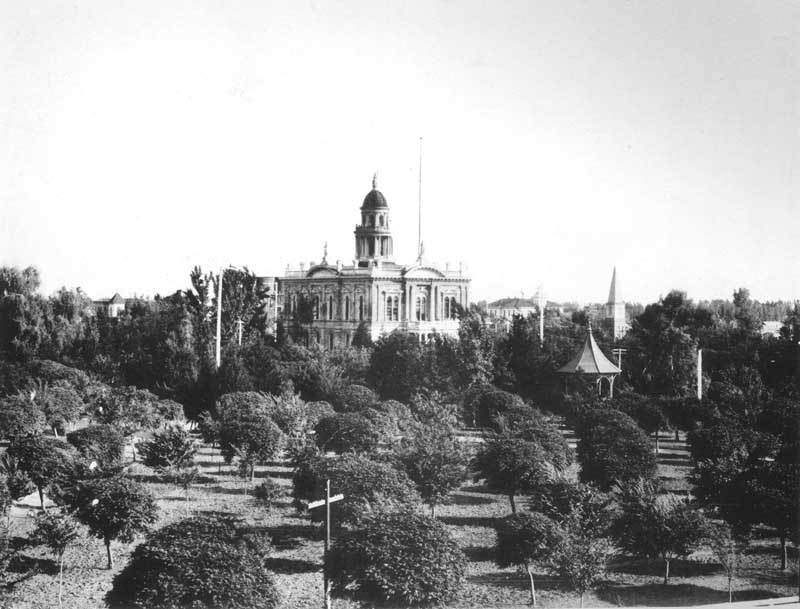
Located in a block bounded by K (later, Van Ness), Fresno, M and Tulare streets and constructed in 1874-1875 by California Bridge and Building Co. of Oakland for $56,370. Original building dimensions were 60 x 97 feet and were substantially increased in later years. The view looks north, with Fresno Christian Church tower (built 1887) visible in the middle right. The Central (later known as the Hawthorne or White) Grammar School between the church and the Courthouse, which opened in 1879. The Courthouse was demolished in 1965-1966
#2 Ed Smith Home 1897
#3 Intersection of Mariposa and I later Broadway streets Fresno, 1890
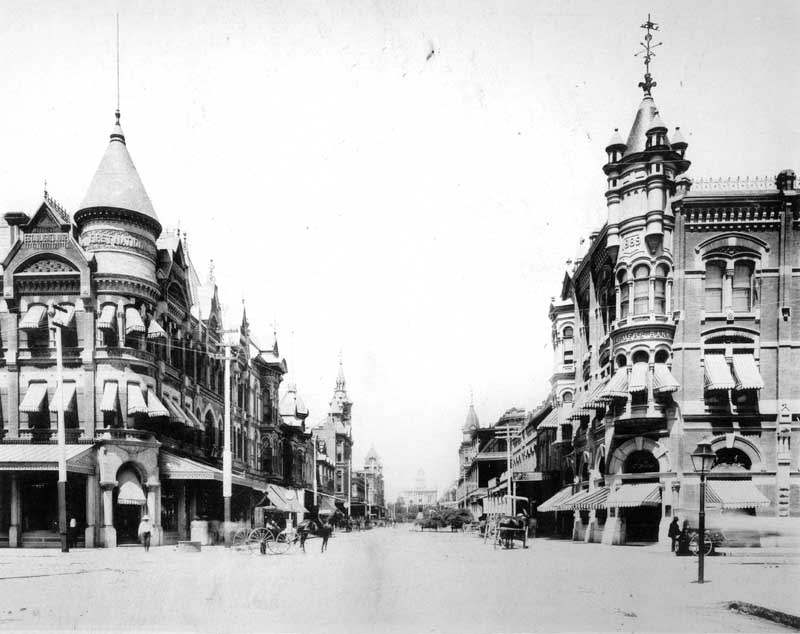
Looking northeast toward Fresno County Courthouse, built in 1874-1875. First National Bank building on the left and Fresno National Bank building on the right. The first tower in the distance on the left-hand side of the image is the Fiske Block, and the tower behind it is the Temple Bar Building. The first tower in length on the right-hand side of the image is the Fresno Loan and Savings Bank. All significant structures shown in the picture were erected during Fresno's first major boom, in 1889, save for the Fresno Loan and Savings Bank, which was enlarged from a smaller structure in that year.
#4 Twenty-acre Colony Farm Fresno County California, 1890
#5 Boy with the Leaking Boot Fountain Fresno California, 1890
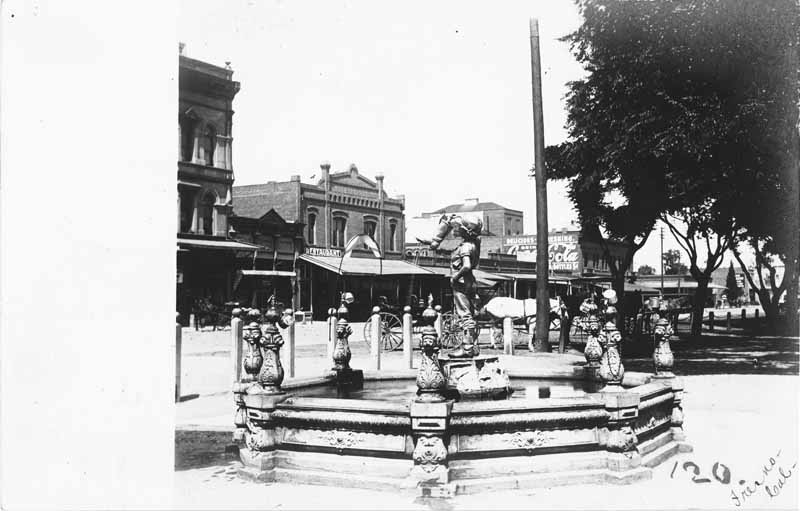
Statue was initially cast from pewter and placed in Courthouse Park in August 1895. It was known as "Iron Johnny", depicting a boy holding up one of his leaking boots, constantly draining water. It served as a combination of the statue and communal drinking fountain cooled by daily deliveries of ice.
#6 Fresno Loan and Savings Bank, 1890
#7 Avenue in Eisen Vineyard Fresno California, 1890
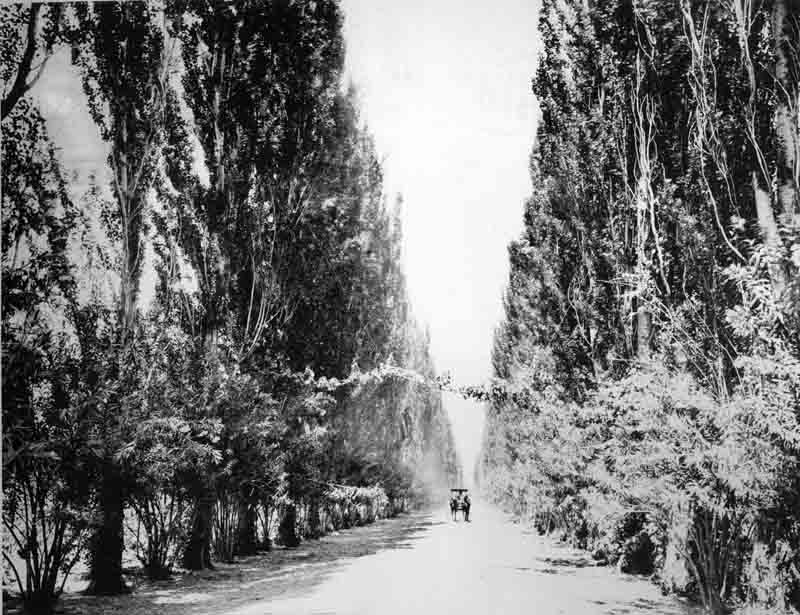
Depicts a lane of poplar trees within the vineyard. One of the earliest agricultural enterprises in Fresno County, founded in 1872 by Francis T. and Gustavus A. Eisen, immigrant brothers from Sweden. The vineyard consisted of 640 acres planted in various grape varieties, including muscats, Malagas and Tokays, and it also included many ornamental horticultural plantings and landscapes. The first raisins produced commercially in Fresno County came from this vineyard. It was later managed by Augustine Eisen, son of Francis, and ceased operations during the 1920s.
#8 Hughes Hotel Fresno California, 1890
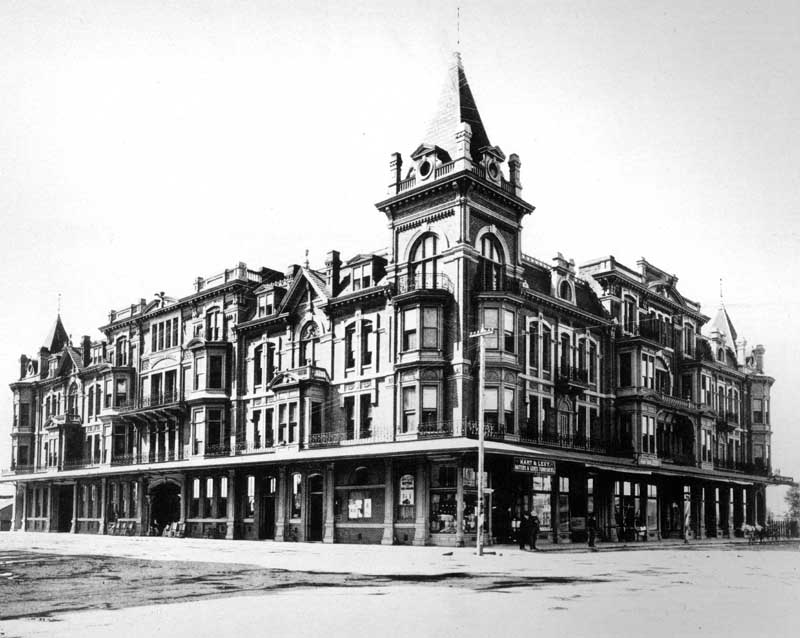
It was located at the corner of I (later, Broadway) and Tulare streets, Fresno and erected in 1887 in Victorian architectural style by a local real estate developer Thomas E. Hughes at a total cost of $300,000. Consisted of a four-story brick structure finished in a sandstone color. At its completion, the Hughes was the largest hotel between San Francisco and Los Angeles. It was the first building in Fresno to have an elevator and the first Fresno hotel to have electric lights, a telephone in each room, and a neon sign in front. An arson fire destroyed it in 1953.
#9 Fiske Block Fresno California, 1890
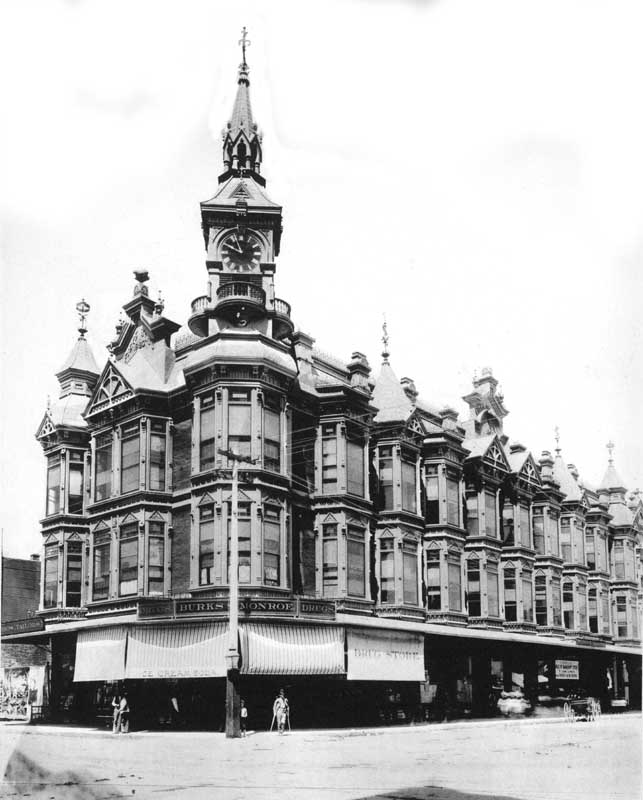
Located at the corner of Mariposa and J (Fulton) streets, Fresno. They were erected in 1889-1890 by John D. Fiske at a total cost of $100,000. The Victorian-style brick structure consisted of three stories with a basement and occupied a 50' x 150' footprint. When completed, its clock tower was the tallest point in Fresno and housed a six-foot Seth Thomas movement that cost $1200. Fiske's owner was shot to death in 1891 by a man who claimed Fiske defrauded him, and S.N. Griffith subsequently acquired the building. In 1914 the Fiske Block was demolished and the Griffith-McKenzie building erected in its place.
#10 Fresno Vineyard Co residence, 1890
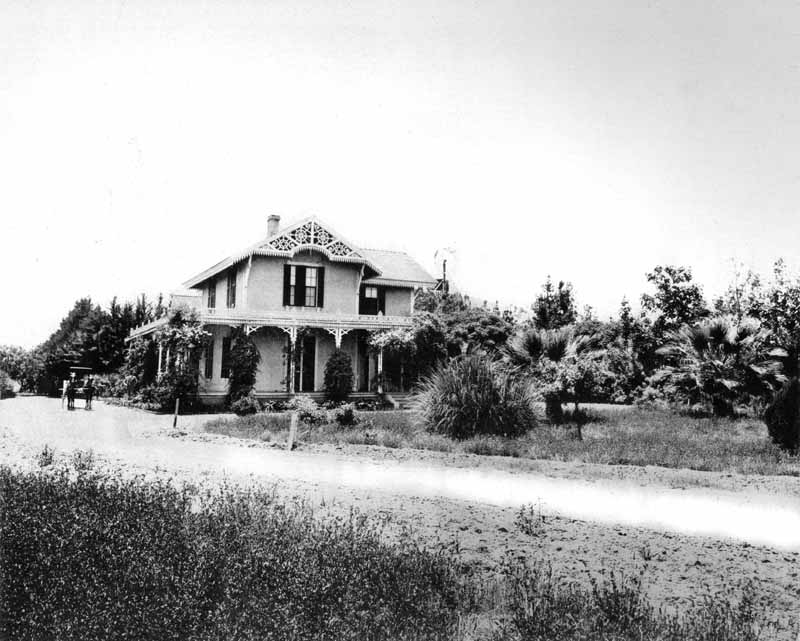
It was located approximately four miles east of Fresno. Built as a two-story folk Victorian structure in 1881, with adobe walls and plastered with cement on the exterior. 16' wide porch surrounded a building on three sides. It contained eight rooms, including a parlor and sitting room on the lower floor and bedrooms on the upper floor. The Fresno Vineyard Co. was organized in 1880 and located on acreage purchased from the Easterby Rancho, Fresno County's first significant farming enterprise. Founders of the Fresno Vineyard Co. included L.P. Drexler, Joseph Brandstein, and M. Theodore Kearney. The company ceased operations in 1914.
#11 Grandpa’s home in Fresno Flats, 1890
#12 J & Mariposa St. Fresno Cal. No. 20, 1890
#13 Hotel Pleasanton Fresno California, 1890
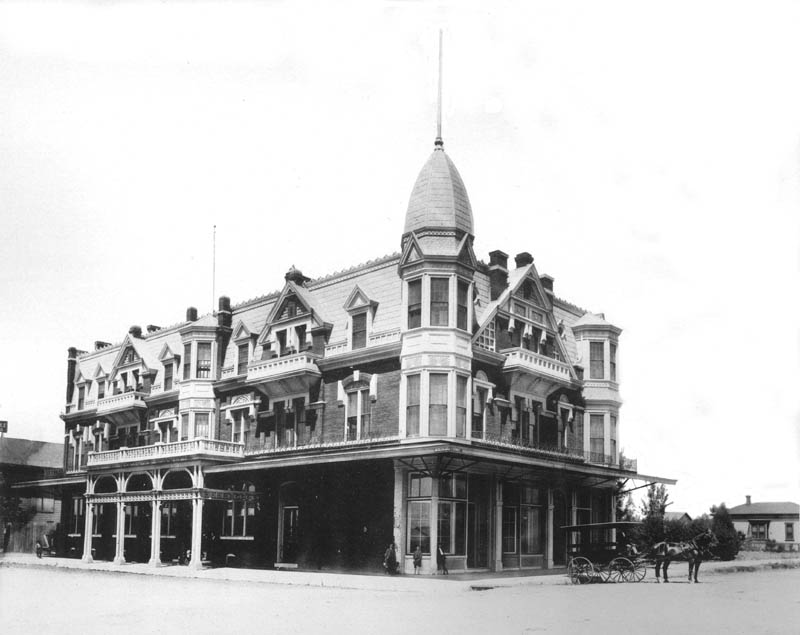
Located at the corner of I (later, Broadway) and Merced streets, built in 1889. Constructed in brick, Victorian style, with three stories and a corner tower. Later known as the California Hotel, and was eventually remodelled to become a part of the White Theater complex, which T.C. White, a Fresno businessman, owned.
#14 Hughes Block Fresno California, 1890
#15 Residence of Colonel William Forsyth Fresno County California, 1890
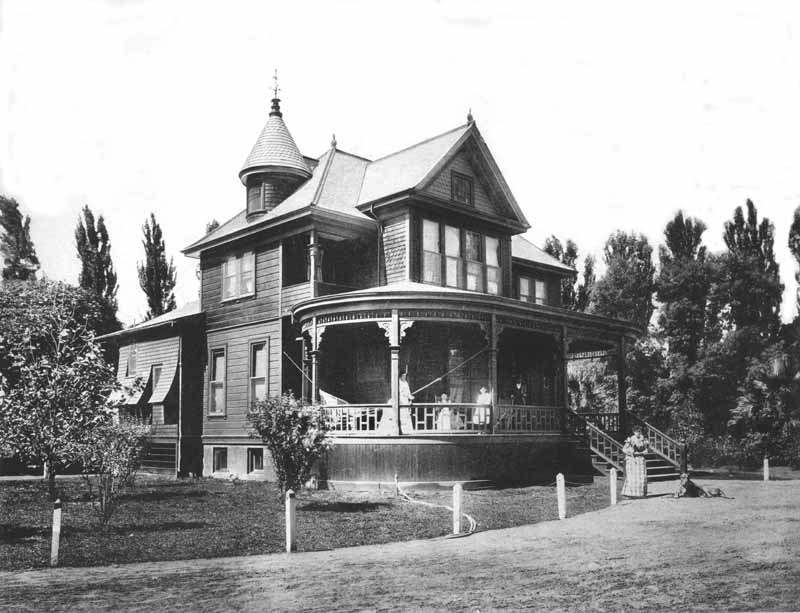
Located at Forsyth Vineyard property, 3 1/2 miles N.E. of Fresno. Forsyth (1850-1910), a native of Toronto, Canada, arrived in California in 1875 and became a prominent hotelier in Sacramento. He purchased and first planted the Fresno vineyard property in 1883 and eventually left the hotel business to pursue strictly agricultural interests, including a sizeable fruit-packing house in Fresno. His first raisin crop was produced in 1887. Forsyth's vineyard was one of the most productive in California, and his residence was one of the most beautiful in Fresno County. After Forsyth's death, his vineyard business was disbanded, and the fate of his home is unknown.
#16 Temple Bar Building Fresno California, 1890
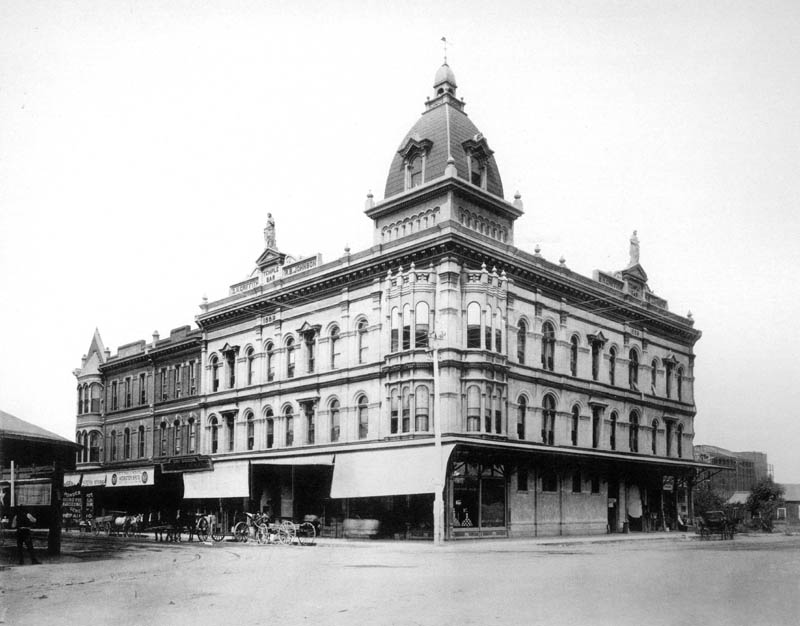
It was located at the corner of K (Van Ness) and Mariposa streets, Fresno, built in 1889 by S.N. Griffith and R.B. Johnson. A three-story Victorian architectural style with brick and plaster construction with corner towers. Initially, the building had offices on its first and second floors, with a boarding house on the third floor. Due to its proximity to the county courthouse, many of Fresno's most prominent attorneys had their offices in the building. Eventually, its two upper floors were removed, and the entire structure was demolished in 1962.
#17 Fresno National Bank Building Picture II, 1890
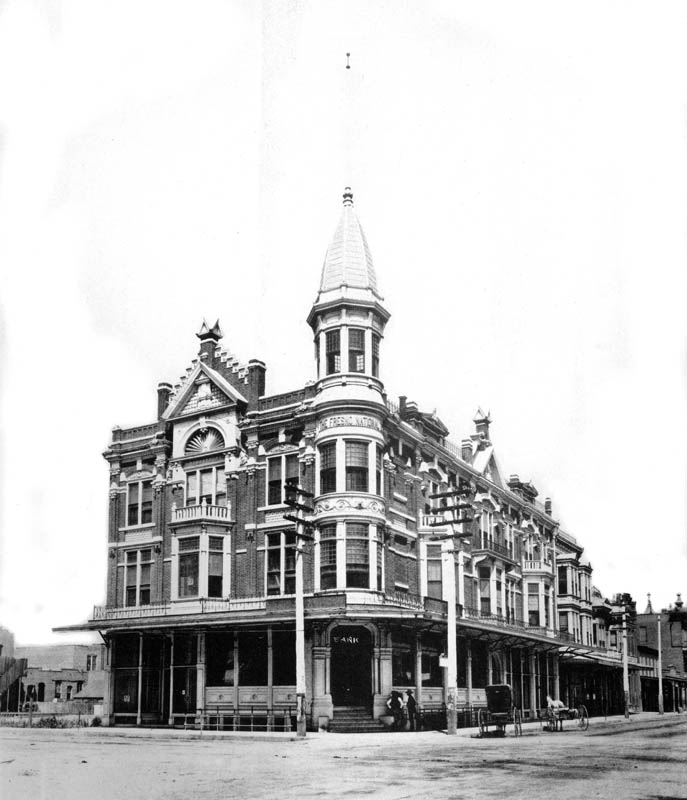
It was located on the N.E. corner of Tulare and J (later, Fulton) streets and built in 1889 to house the bank, which had been formed in the previous year. The building featured Renaissance Revival details and cost $70,000 to erect. The bank was purchased by the Bank of Italy (later, Bank of America) in 1916, and the building was demolished in 1917. A replacement of an eight-story structure, housing the Bank of Italy, rose on the site in 1918
#18 First National Bank of Fresno California, 1890
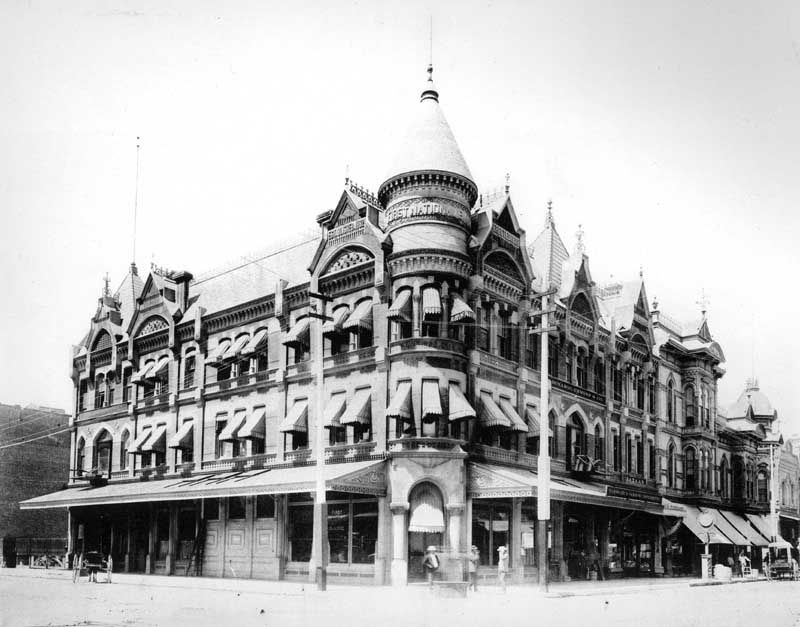
It is located at the N.E. corner of Mariposa and I (Broadway) streets. Constructed in 1889 in Gothic-Romanesque style to house the Fresno County Bank created in 1881. In 1885, the bank changed its name to the First National Bank. The building was constructed by C.K. Kirby & Son with a cost of $28,789. It was made of brick with sandstone trimmings and pillars of Scotch granite. The Bank of Italy (later, Bank of America) purchased the First National Bank in 1921, and the building was eventually demolished to make space for a parking lot.
#19 Toll House grade, the 1890s
#20 Administration Building, 1893
#21 Fresno Milling, 1890s
#22 Fresno National Bank Building Picture, 1890
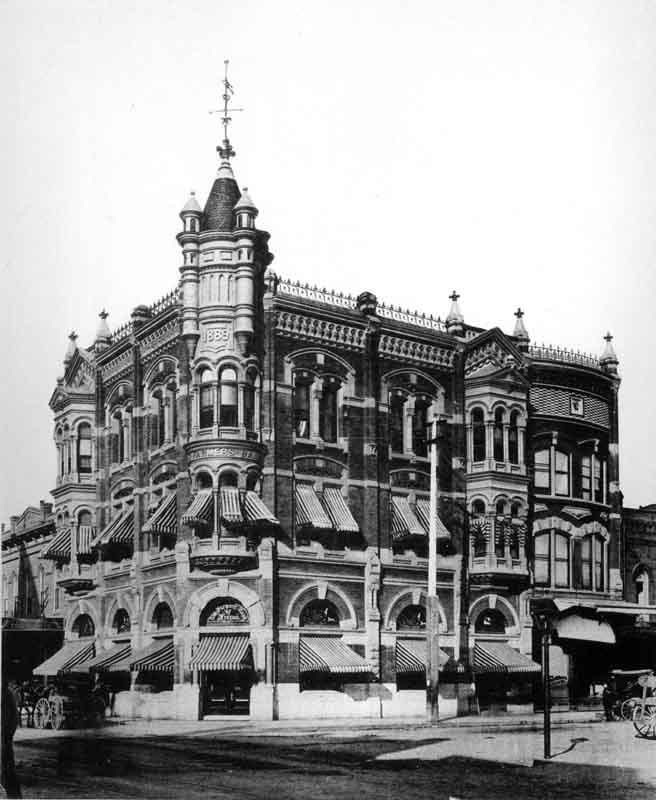
They were located at the S.E. corner of Mariposa and I (later, Broadway) streets and constructed in 1889 in Gothic-Romanesque style to house the bank founded in 1882. Construction materials were pressed brick with stone trimmings. Bank later merged with the Bank and Trust Company of Central California to become the Fidelity Trust and Savings Bank, which later merged with the Security-First Bank of Los Angeles. The bank building was demolished in 1920 and replaced by an automobile service station.
#23 Kutner Goldstein delivery wagon Fresno California, 1890
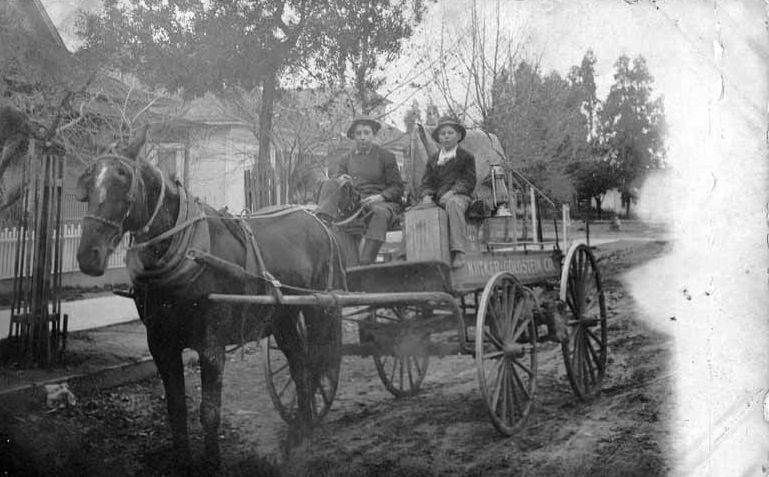
Two boys were riding on a Kutner-Goldstein delivery wagon. During the 1890s, general stores and grocery stores became more numerous in Fresno. One of the better knowns was Kutner-Goldstein & Company, whose main store was on the corner of Mariposa and H streets, offering the shopper dry goods, carpets, curtains, and wallpaper.
#24 Shaver Lake, 1898
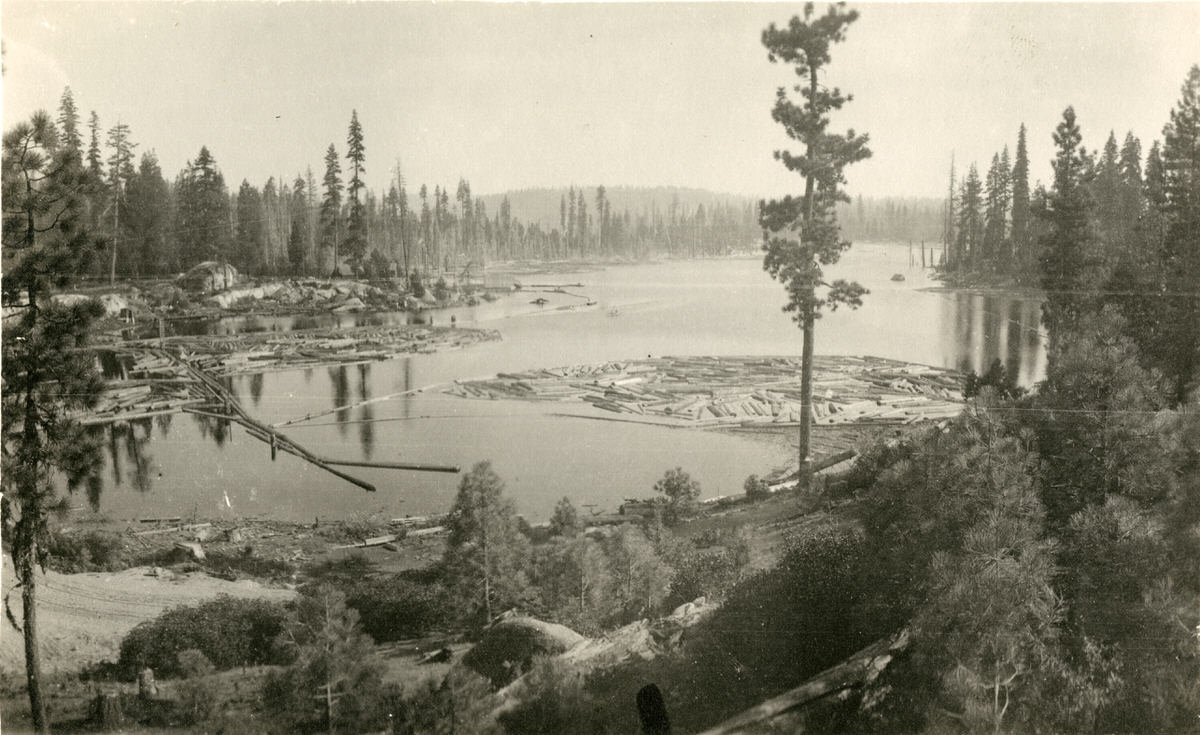
Log boom at Shaver Lake. C.B. Swift and Charles B. Shaver owned the Fresno Flume and Irrigation Company; built a dam on Stevenson Creek forming Shaver Lake, built two mills and flume to transport lumber from Shaver Lake to Clovis (where had planing mills, box factory, dry kilns).
Manley Freeman White was born March 25, 1882, in York County, Nebraska, to Joseph Freeman White and Hattie Monroe (both from Canada). The family arrived in Fresno between 1885 and 1900. Between 1900 and 1920, he resided in Fresno. The 1920 census listed Manley as being in Merced Falls, in 1930 census listed as being in Hilt, Siskiyou County; by 1940, he was in Klamath, Oregon. Worked as millhand in the lumber industry. While in Fresno, worked seasonally at Shaver Lake for the Fresno Flume and Irrigation Company (owned by C.B. Swift and Charles B. Shaver).
#25 Possibly Fresno baseball team members, 1893
#26 Fresno Flats, 1890
#27 Chateau Plateau, February 12y 12, 1892
#28 Exterior view of the Hughes Hotel in Fresno, 1890
#29 Flock of sheep grazing in Pinoche Valley, Fresno, 1900
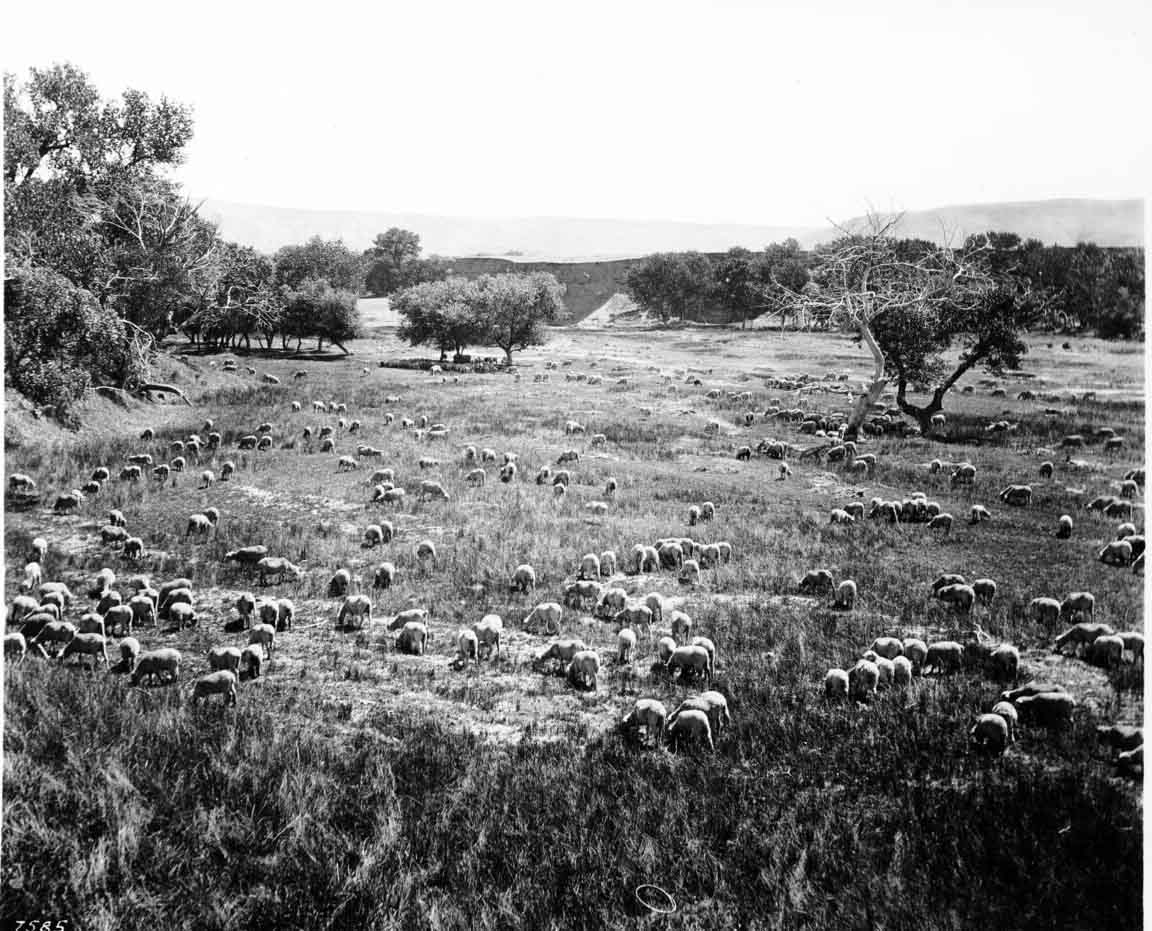
Photograph of a flock of sheep grazing in Pinoche Valley, Fresno, ca.1900. Mountains are visible in the background as hundreds of sheep spread out across the grassland, feeding. A leafless tree is visual in front of a second tree to the right, with a second tree line visible farther in the left distance.
#30 The construction of the original timber faced, rock-filled dam that impounded the millpond for C.B. Shaver’s pioneer lumbering venture at Shaver Lake 1893
#31 Santa Fe Railroad Engine, Tulare, 1890
#32 Alfred Ketcham hauling wool with 12-span team 1894
#33 Harvester Crew on T.W. Standart’s Huron Ranch 1894
#34 Young’s Cabin 1893
#35 Central Hotel, Porterville, 1890
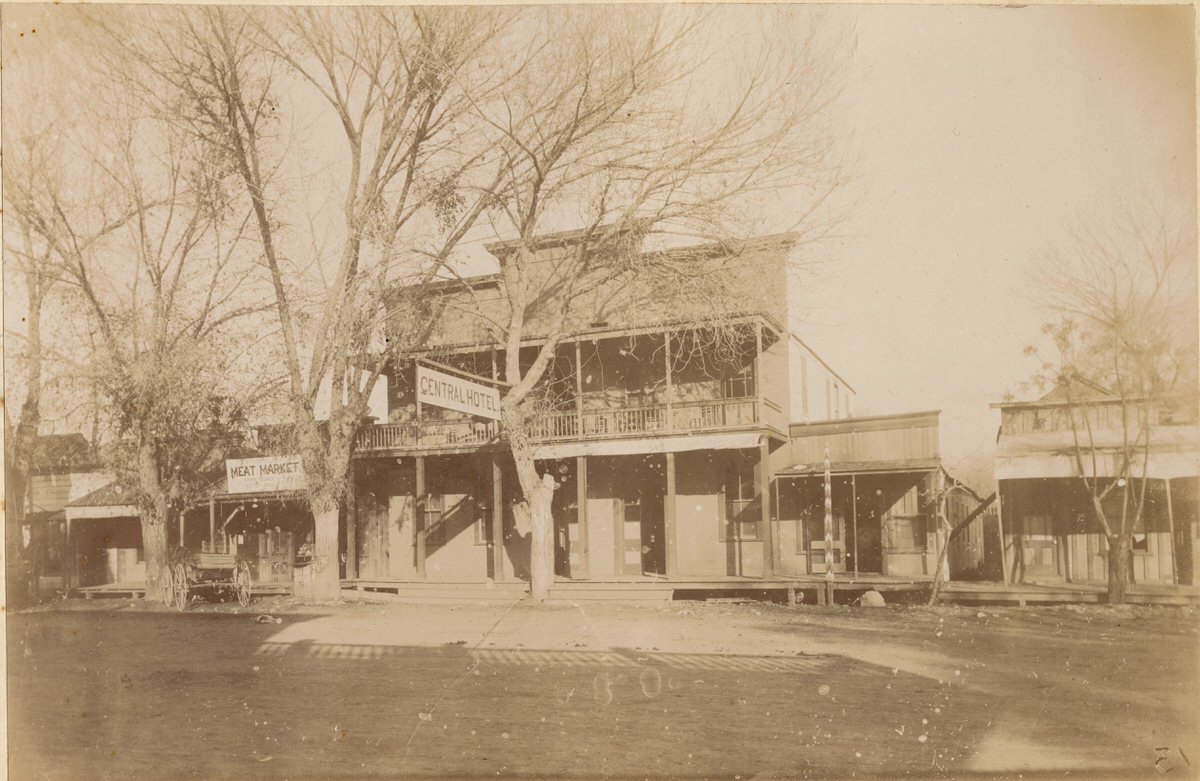
View of the two-story Central Hotel (center), a wooden building with covered porches at first- and second-stories; single-story buildings on both sides of the hotel, at left a meat market; wooden-sidewalks and trees in front of the buildings; horse and buggy parked in front of the meat market.
#36 La Fiesta De Los Angeles, 1895
#37 Chico Soda Works Wagons, 1895
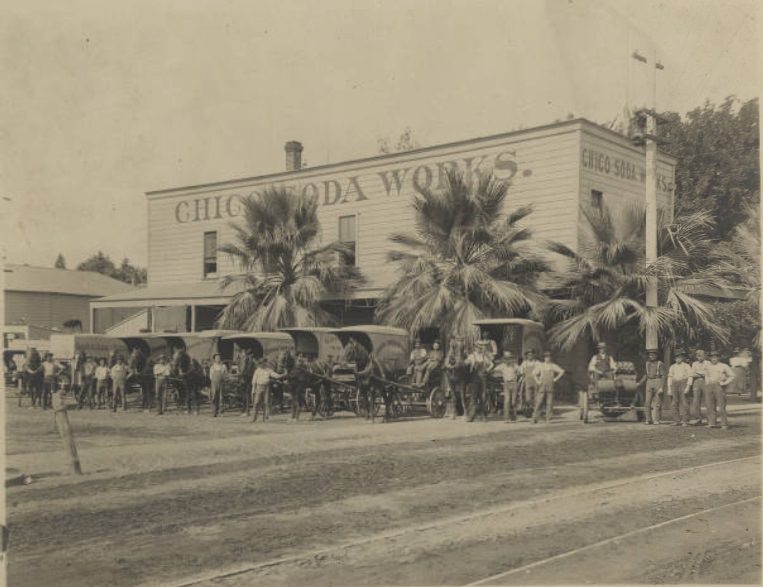
Chico Soda Works building in the background with several horses and carriages. Chico Soda Works was located on the corner of Ivy and West Fifth Streets, Chico, California. The Chico Soda Works was started by a man named A. F. Blood and was first located on Seventh and Broadway. Blood sold it to A. G. Eames, and he moved it to the Ivy St. location. The home that shows behind the Chico Soda Works is the Eames' residence.
#38 Harry A. Greene mansion, 361 Lighthouse Avenue, Monterey, 1890s
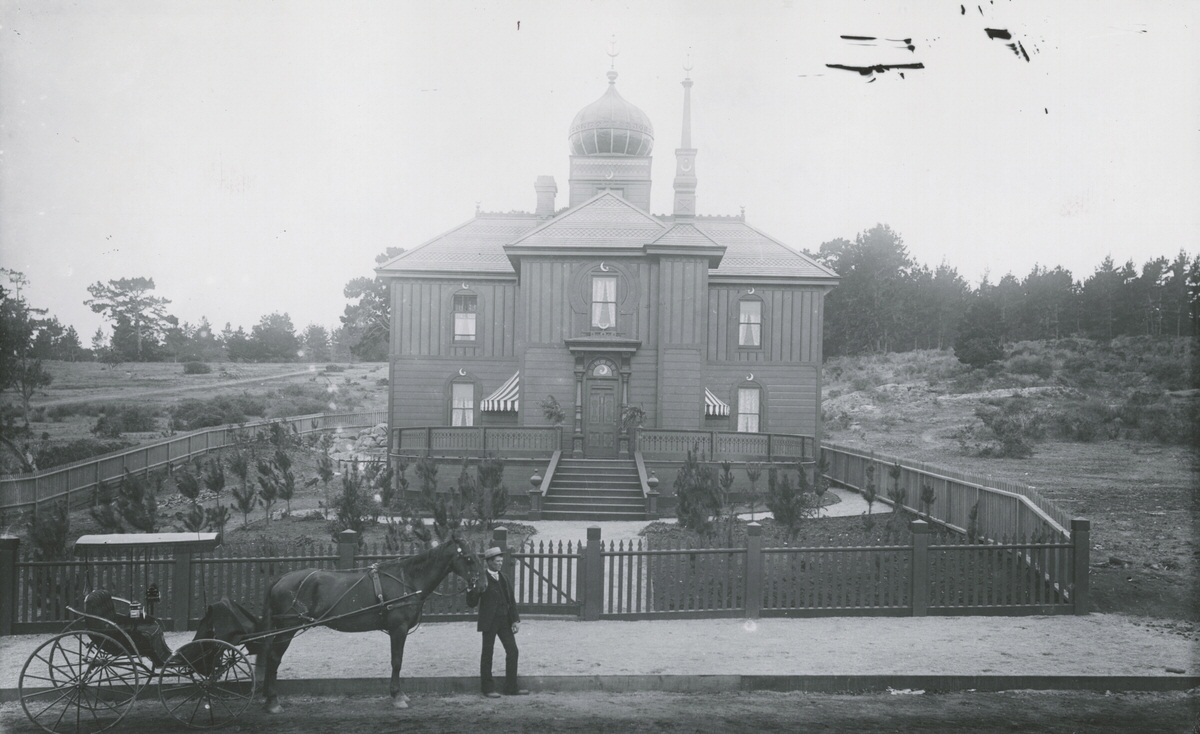
Harry Ashland Greene was born in San Francisco in 1852 and worked in San Francisco as a broker on the stock exchange. In 1886 moved to Monterey, where he was active in real estate, owned several hotels (Hotel San Carlos, Hotel Monterey), was involved in Monterey & Fresno Railroad and the Monterey & Pacific Grove Street Railroad, Bank of Monterey. Married Arabella Little. Died in 1933.
#39 Santa Fe Railroad Engine, Tulare, 1890
#40 Fresno in 1886
#41 View from the top of the Courthouse, 1896
#42 Old Court House, 1894
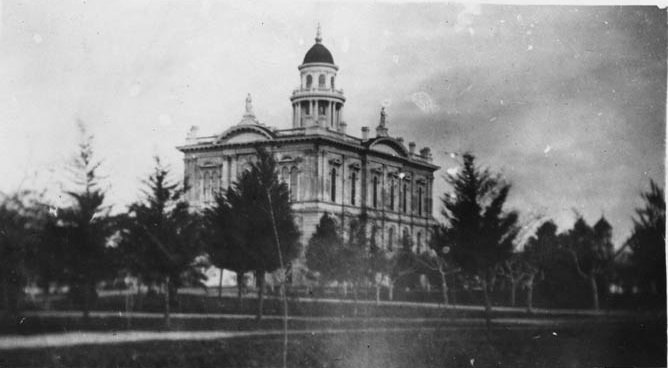
View of the Fresno County Courthouse. Foundation work started on October 1 1874 and was completed on August 19 1875. The Board of Supervisors met here for the first time on September 6 1875. In 1878 about four acres of land around the Courthouse were landscaped with the first planting of trees. Landscaping was completed in 1888. The building was demolished in 1966.
#43 M south of Merced Flood of 1884, Fresno, California
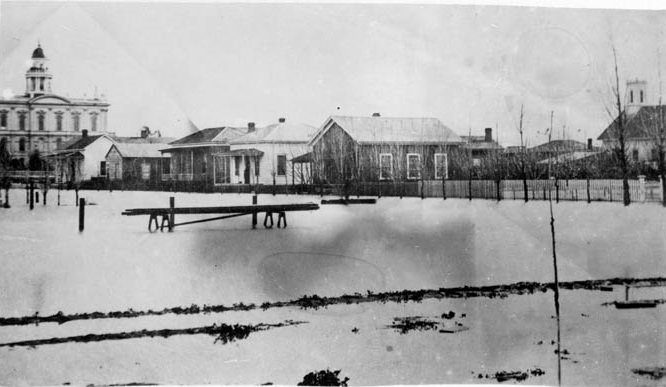
Photo depicted the situation on M Street when the Flood of 1884 covered every street in Fresno. The Fresno County Courthouse is seen in the background to the left. The church seen to the right is the Southern Methodist Church at L and Fresno streets. Floods threatened to wipe out Fresno every winter due to its sink of four creeks, Dry Creek, Red Banks, Dog Creek, and Fancher Creek.
#44 Mariposa east from Court House, 1890s
#45 K Street N from Fresno Street Flood of 1884, Fresno, California
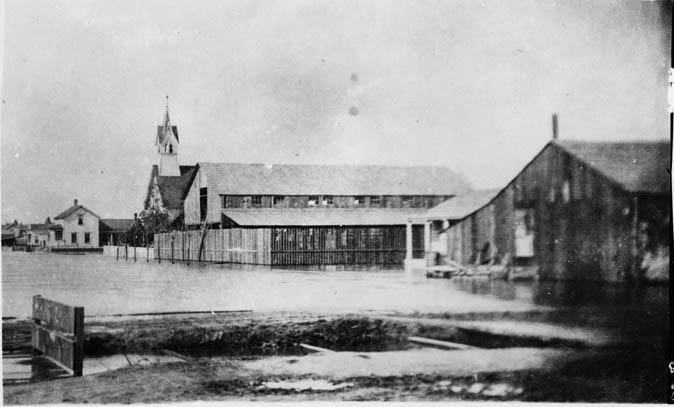
On February 16 1884, floodwaters covered every street in Fresno. Floods threatened to wipe out Fresno every winter because Fresno was located in the sink of four creeks: Dry Creek ran just to the north of town; Red Banks and Dog Creek merged in the flatlands to the east; and Fancher Creek ran nearby with the center of Fresno as the confluent point. This photo depicts the situation on K Street, with the photographer looking north from Fresno Street. The Mill Ditch is visible in the foreground on Fresno Street. This irrigation ditch was built in 1878 by Moses J. Church to power his Champion Flour Mill at the corner of Fresno and N Streets. Several narrow plank bridges are seen spanning the ditch. The first building on the right is the J. Williams Blacksmith and Wagon Shop. The following structure is the F. Banta Eureka Planing Mill. The steeple of the Methodist Church can be seen in the distance.
#46 Kern east from G Street, Fresno Calif, 1890
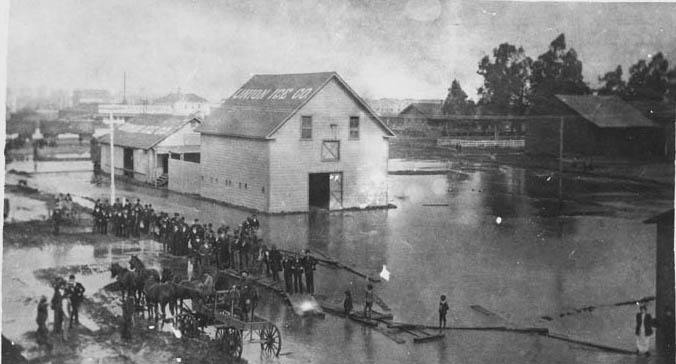
The flooded Union Ice Company warehouse is located just south of the Southern Pacific Railroad tracks. The photographer was on G Street, looking northeast towards Kern. The sign in the background says "Planing Mill", probably Madary's Planing Mill located on H Street and Kern. Floods threatened to wipe out Fresno every winter owing to its location as the sink of four creeks of Dry Creek, Red Banks, Dog Creek, and Fancher Creek.
#47 De Long Corner I and Mariposa streets, Fresno, California, 1890
#48 Adventist camp at P and Mariposa streets, Fresno, California, 1890
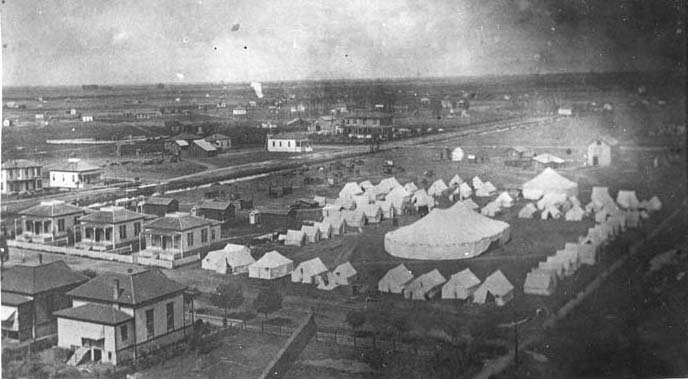
Adventist camp meeting on the northwest corner of P and Mariposa streets. The Seventh-day Adventist formally organized in Fresno in 1888 after sporadic meetings in and around the area. Moses J. Church, a convert to the religion, built a $40,000 church for the congregation with a seating capacity of 800. The church was located on the northeast corner of O Street and Mariposa.
#49 Fresno Chinese Mission and Inyo Streets.
#50 J Street N from Fresno Flood, California, 1884
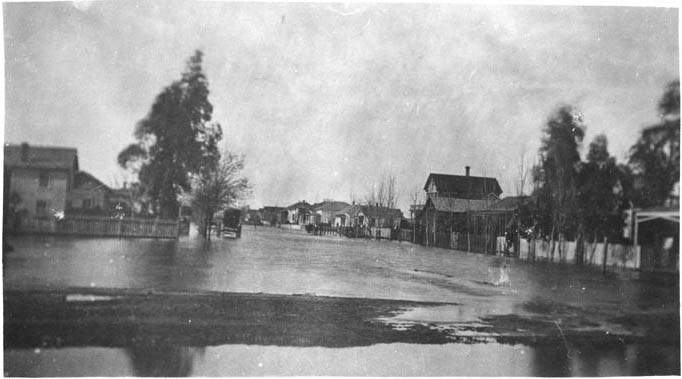
On February 16 1884, floodwaters covered every street in Fresno. All basements and ground floors were flooded. The only means of transportation within the city was by boat. This photo depicts the situation on J street, looking northwest of Fresno street. Floods threatened to wipe out Fresno every winter because Fresno was located in the sink of four creeks. Dry Creek ran just to the north of town, Red Banks and Dog Creek merged in the flatlands to the east, and Fancher Creek ran nearby, with the center of Fresno as the confluent point.
#51 H Street north from Tulare Street, Fresno, California 1894
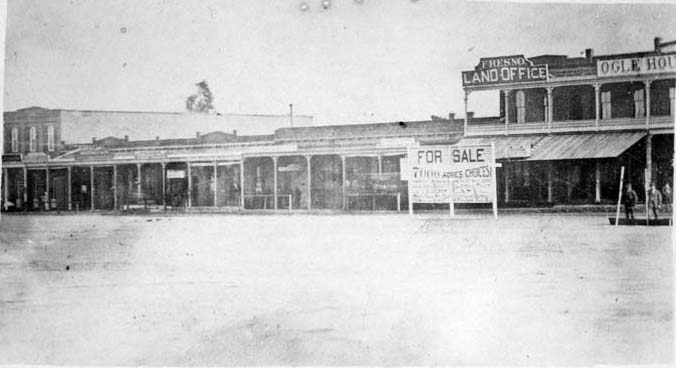
View of H Street looking north between Tulare street off to the right and Mariposa Street to the left. The Ogle Hotel is seen on the far right, with Louis Einstein's Pioneer Store visible on the far left of the photo. Einstein's Store on the corner of H Street and Mariposa was erected in 1875 and was the third brick building in the city.
#52 Hutchinson Post Office, now Land Co Block Fresno California, 1890
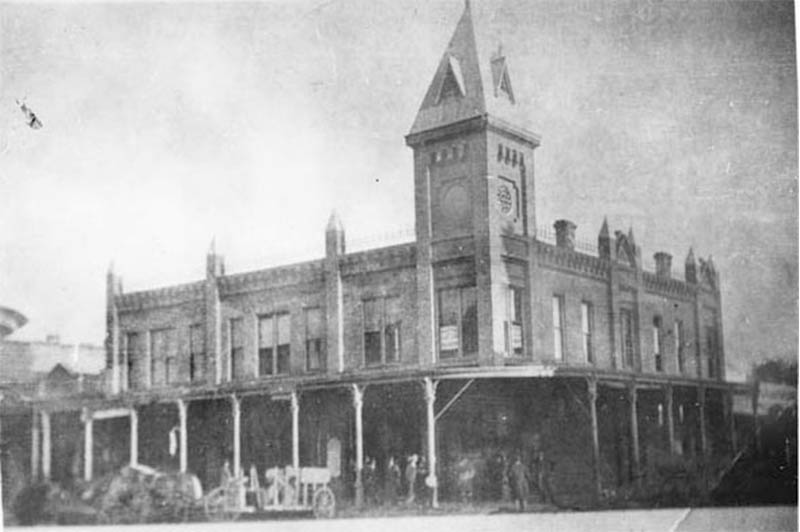
Post Office in Fresno, located in the two-story Hutchinson Block, is currently the location of the Security Bank Building at Mariposa and Fulton Streets. The Hutchinson Block was built by Charles G. Hutchinson, a San Francisco capitalist, as part of a surge of "block" building with most of the structures named for their builders. Construction began in 1883 and was completed in 1885. Adjoining property owners started the practice of subsidizing the post office to attract business up Mariposa Street. The post office had been farther west toward the Southern Pacific Railroad station. Property owners paid the rent for the post office in the new Hutchinson Building for several years. This building was extensively remodelled in 1889 by the Fresno Loan and Savings Bank, with two additional stories and an elevator. The bank became insolvent in 1895, and the building was demolished in 1923 to make way for the Pacific Southwest (later, Security Bank) Building.
#53 K and Tulare streets from Court House Fresno California.
#54 Arlington Hotel Flood of 1888 view from I Inyo streets Fresno, California, 1888
#55 Interior First National Bank, 1890
#56 Children in traditional dress, 1895
#57 Birdseye view of Mariposa Street in Fresno, looking towards theCourthouse, 1896
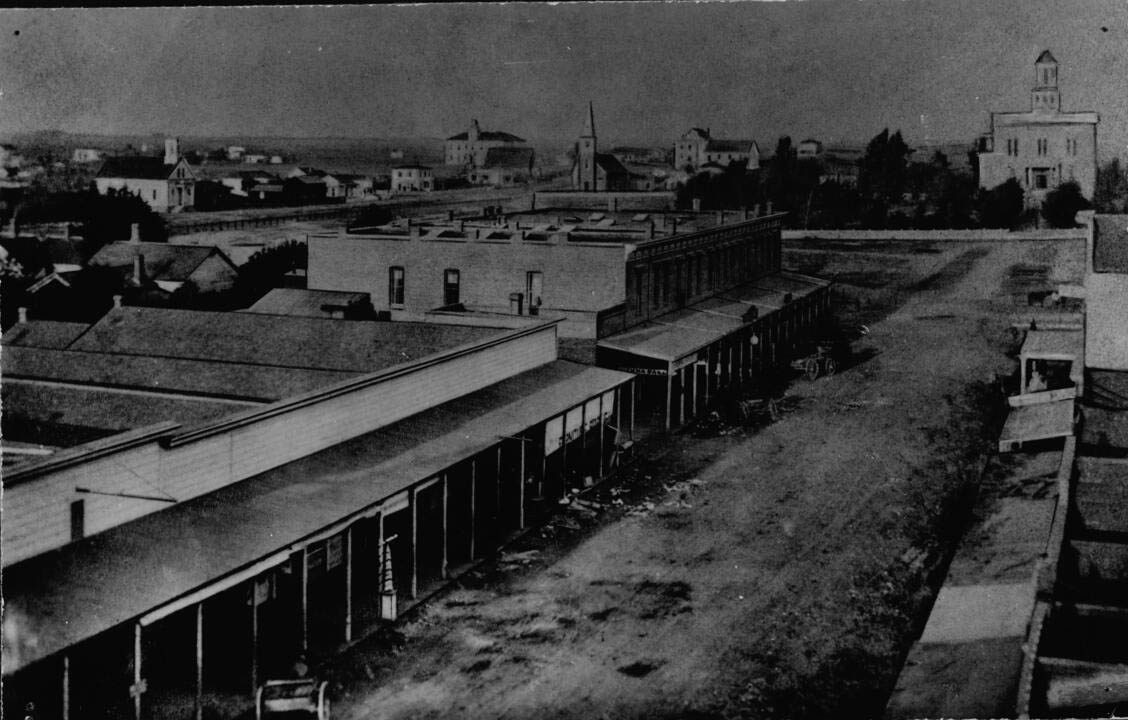
Mariposa Street is a wide dirt road that runs from the foreground at center to the base of the Courthouse in the distance at right. The road is lined with low wooden buildings that have covered porches across their entire storefronts. In the background at left, several more buildings are visible, including a church with a tall steeple. The Courthouse is a three-story building with a tall cupola on its flat roof.
#58 Coal mine, 1890
#59 Expositor office, Fresno, California, 1890
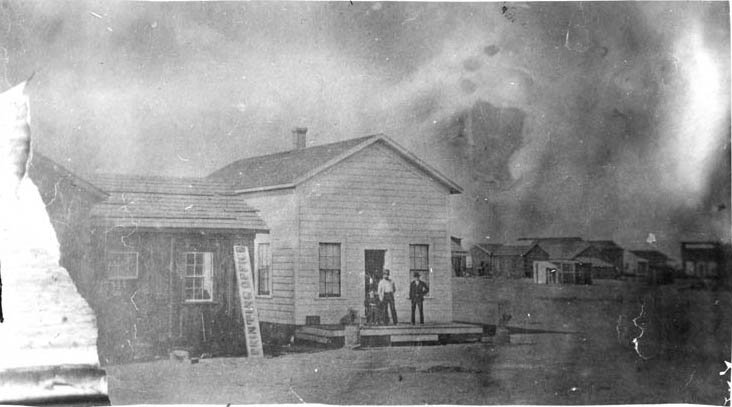
The Fresno Weekly Expositor Newspaper first made its appearance in Millerton, Calif., on April 27 1870, founded by J.W. Ferguson, acting as both editor and owner. Moved to Fresno in 1874 along with the county seat, located on J (Fulton) Street near the corner of Tulare. It became a daily paper in 1881 and moved into a new two-story building in 1888. After numerous ownership changes, a syndicate called the Fresno Publishing Company took over the newspaper in 1897, but the paper's financial difficulties were forced to close on September 1, 1898.
#60 Fresno Fire Company, Fresno, California, 1890
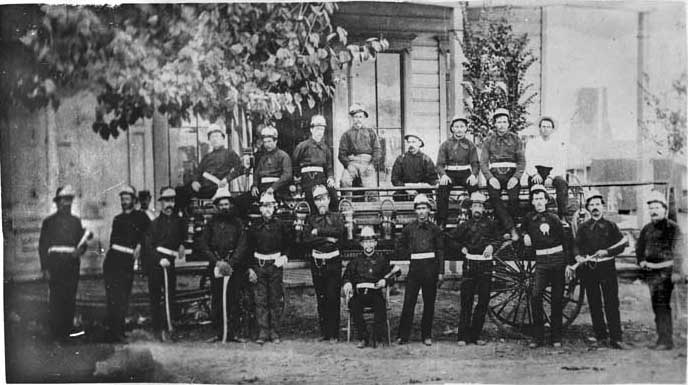
The Fresno Hook and Ladder Company were organized on February 24, 1877. Mr Leopold (Lee) Gundelfinger was the fire chief, is seated in the centre of the front row of this photograph. The other firefighters start in the back row left to right, Charles Wainwright, John Elam, Lephonso Burks, Harry Rea, Charles DeLong, Louis Einstein, Charles Overholzer, and N.D. Gilbert. The front row from left to right are Fred Kramer, George Strine, Frank Tadlock, Steve Spano, John Dwyer, Wm. Lawrenson, Lee Gundelfinger (Chief), Will Silvers, John Welsh, Wm. H. McKenzie, Andrew Basso, and John Boyle.


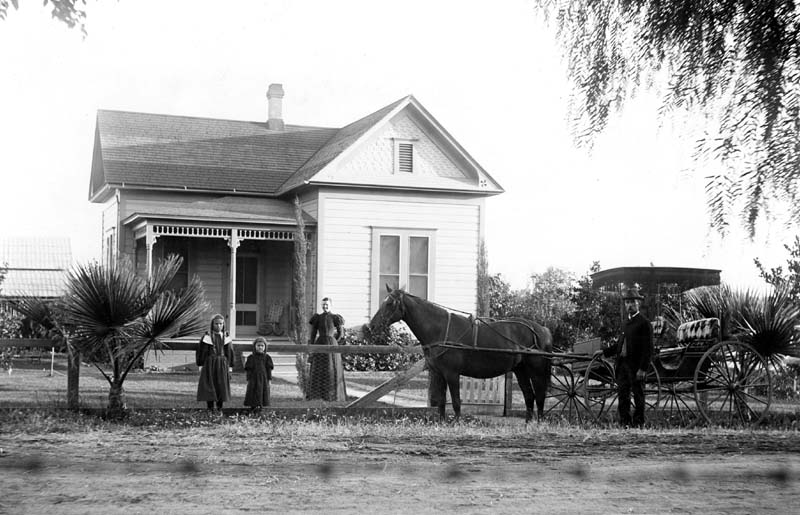
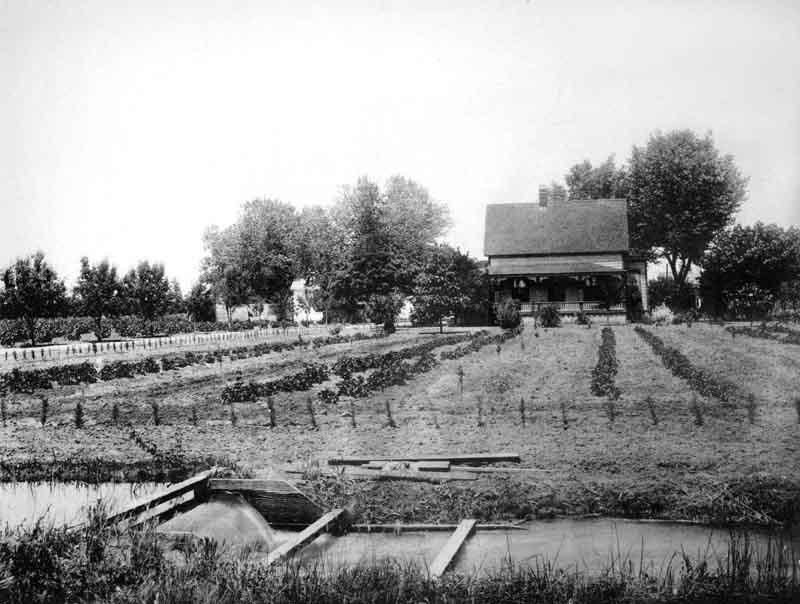
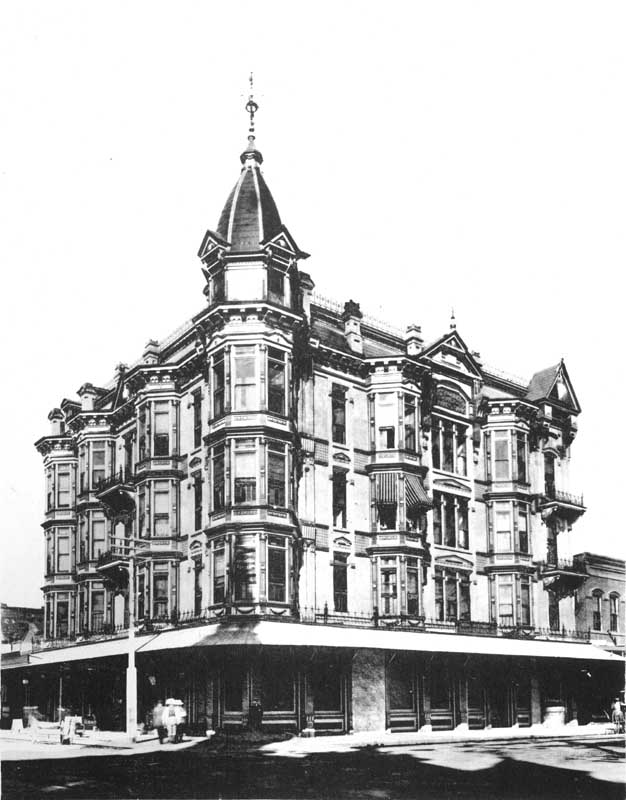
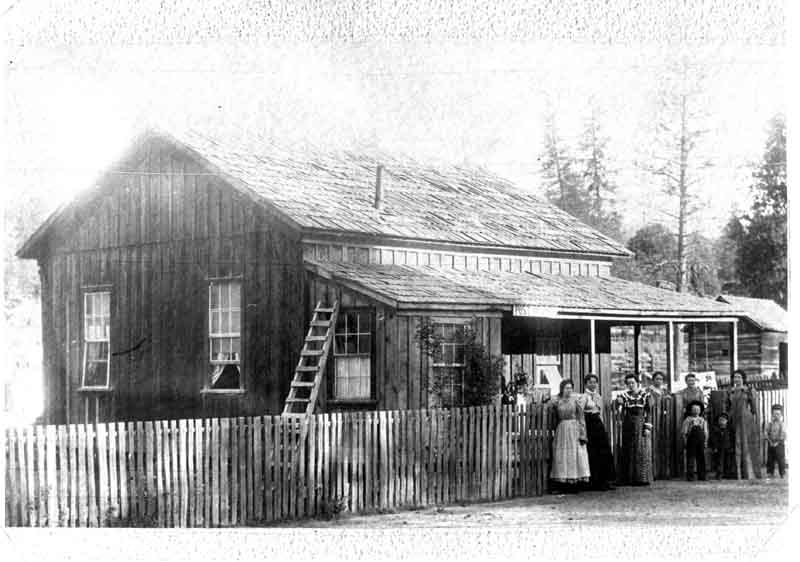
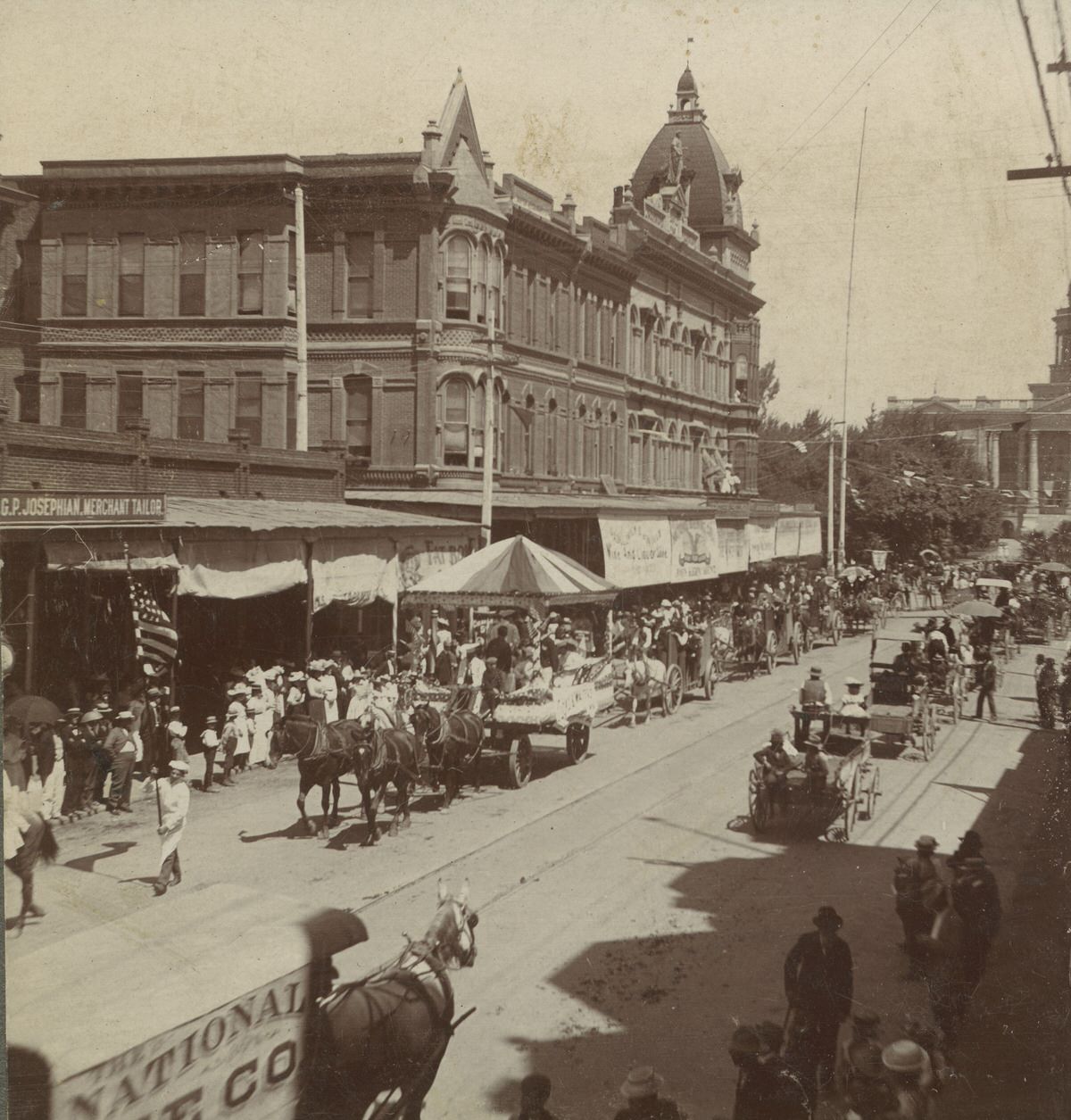
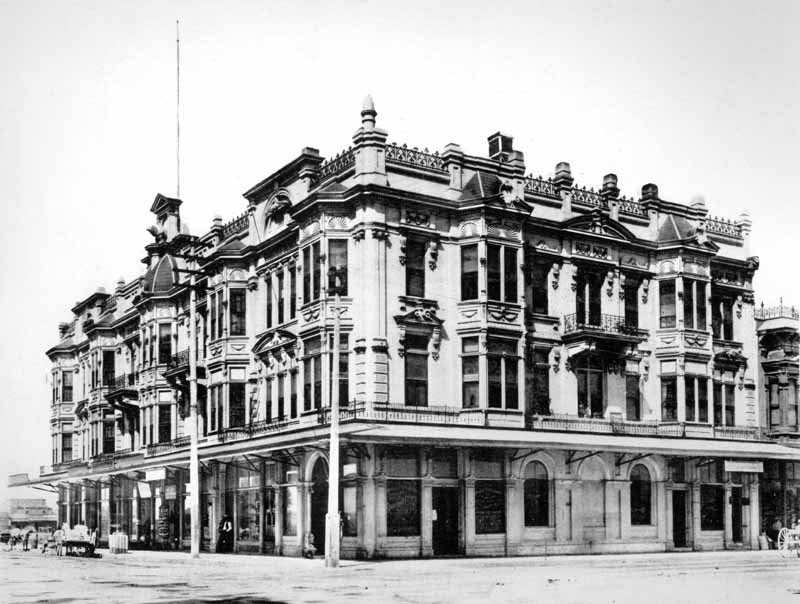
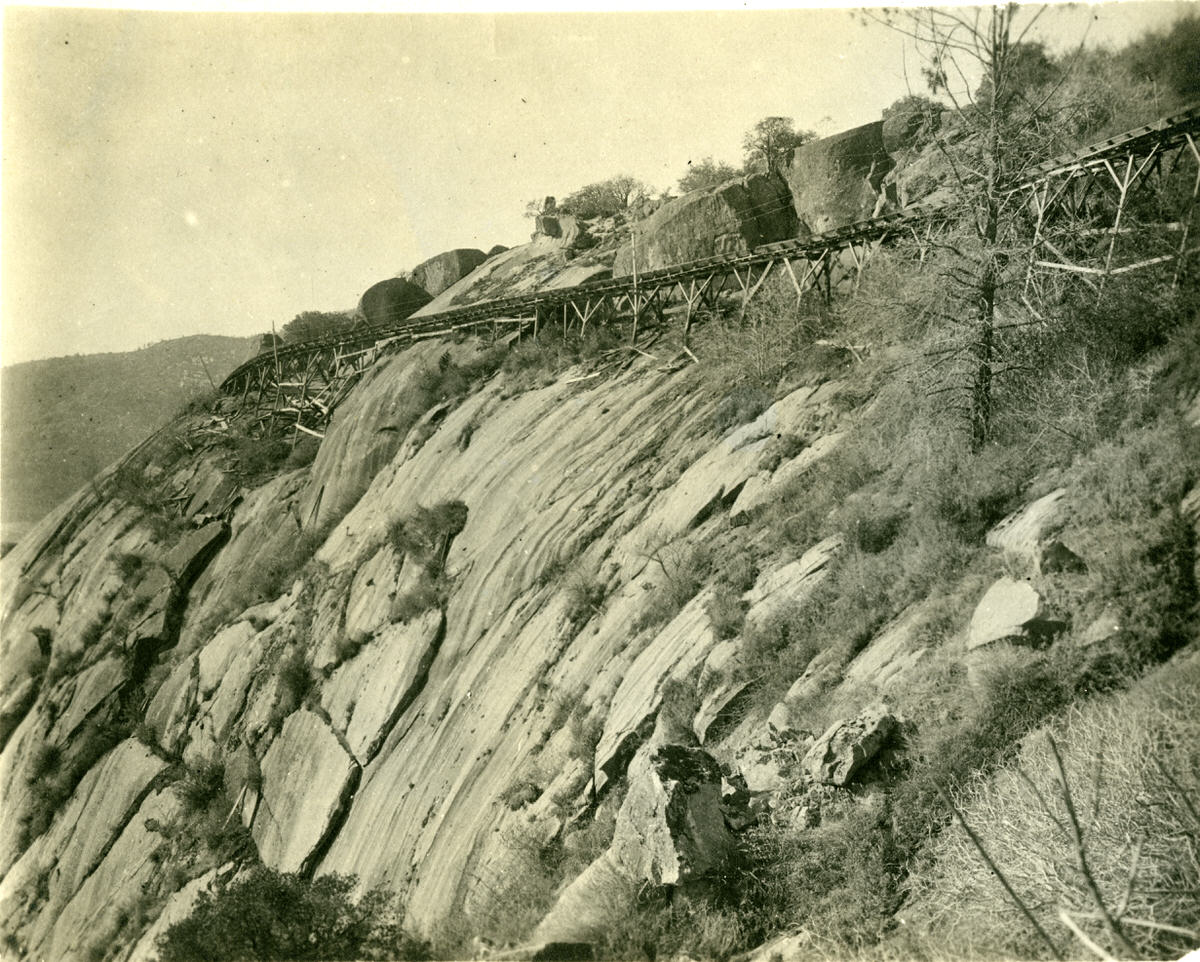
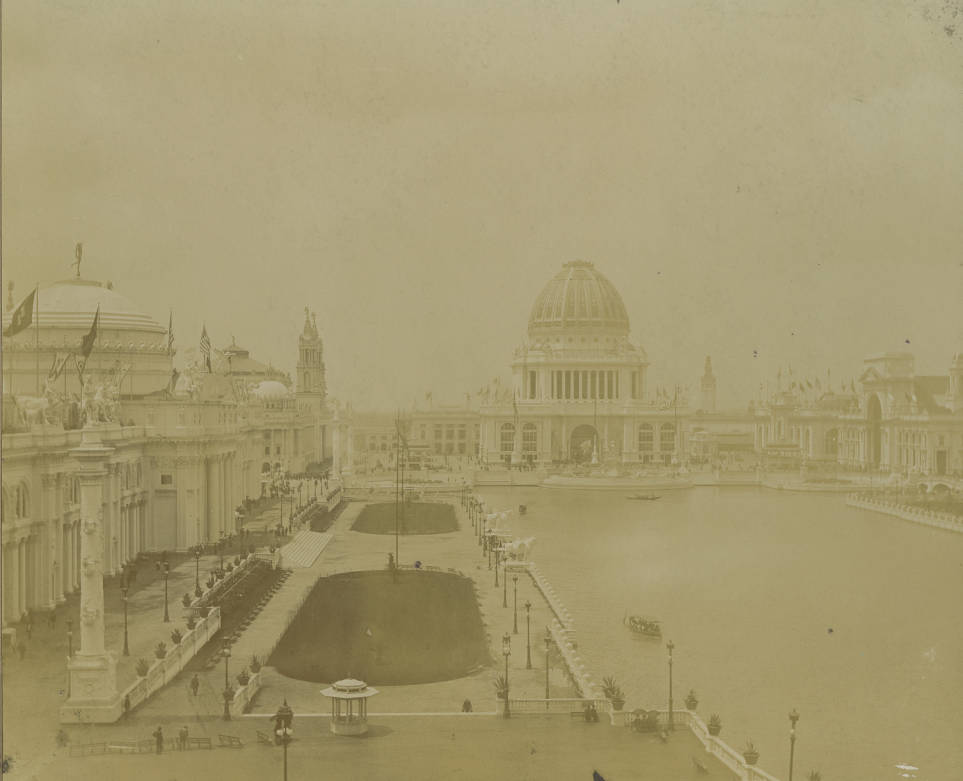
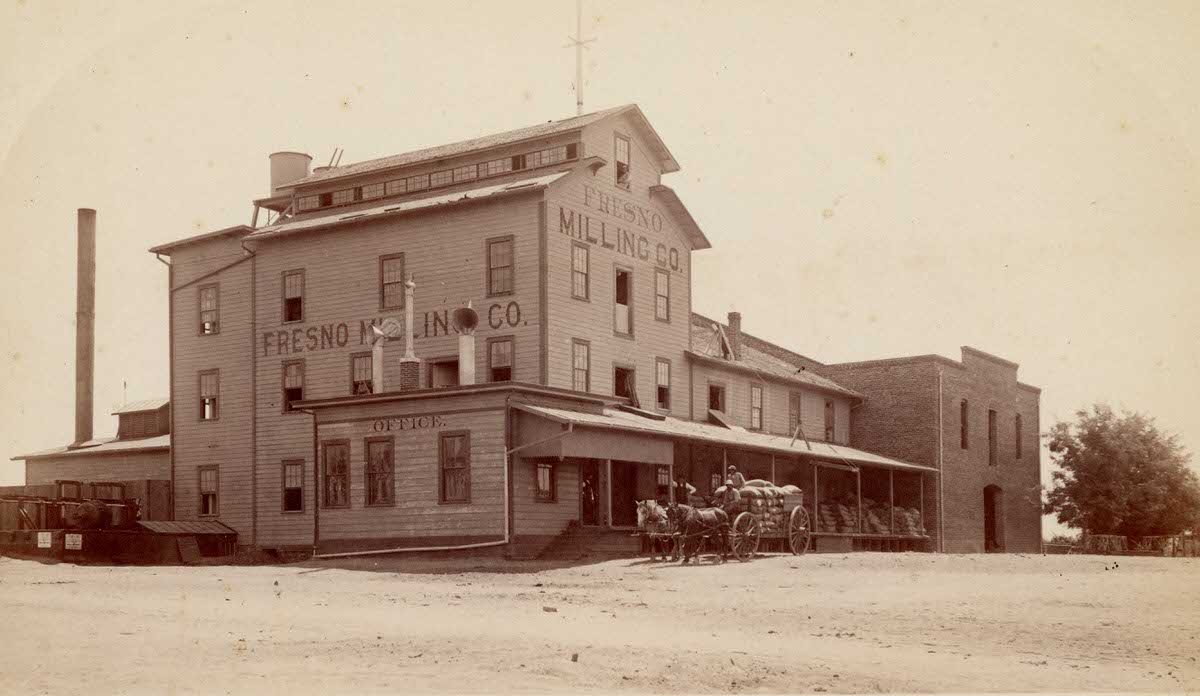
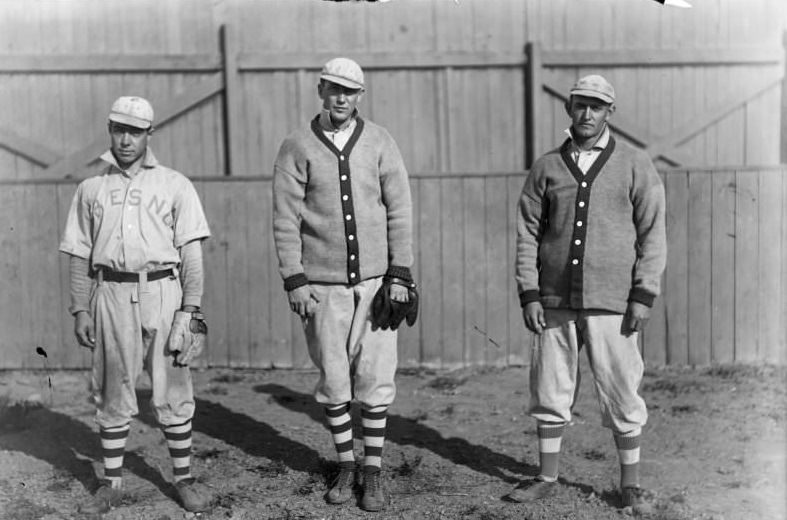
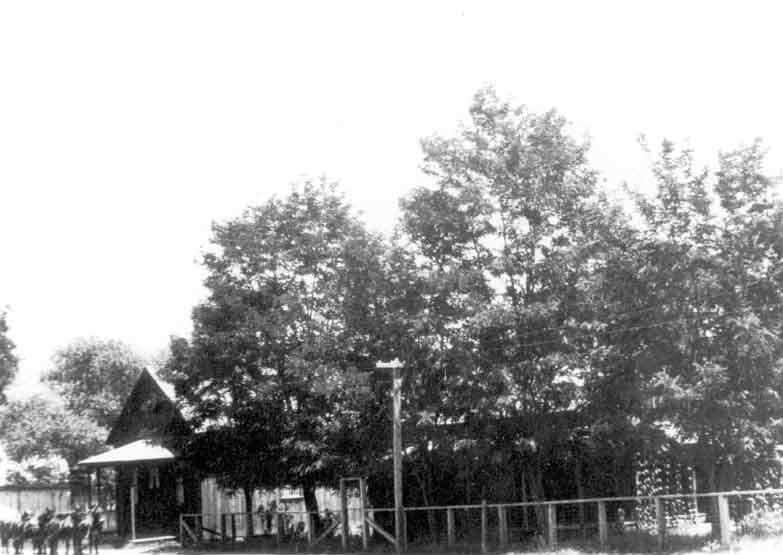
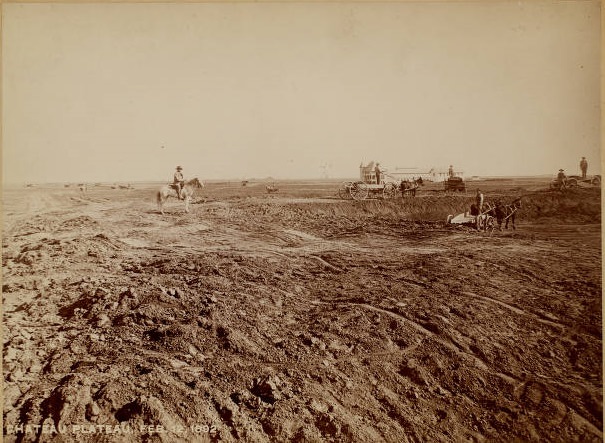
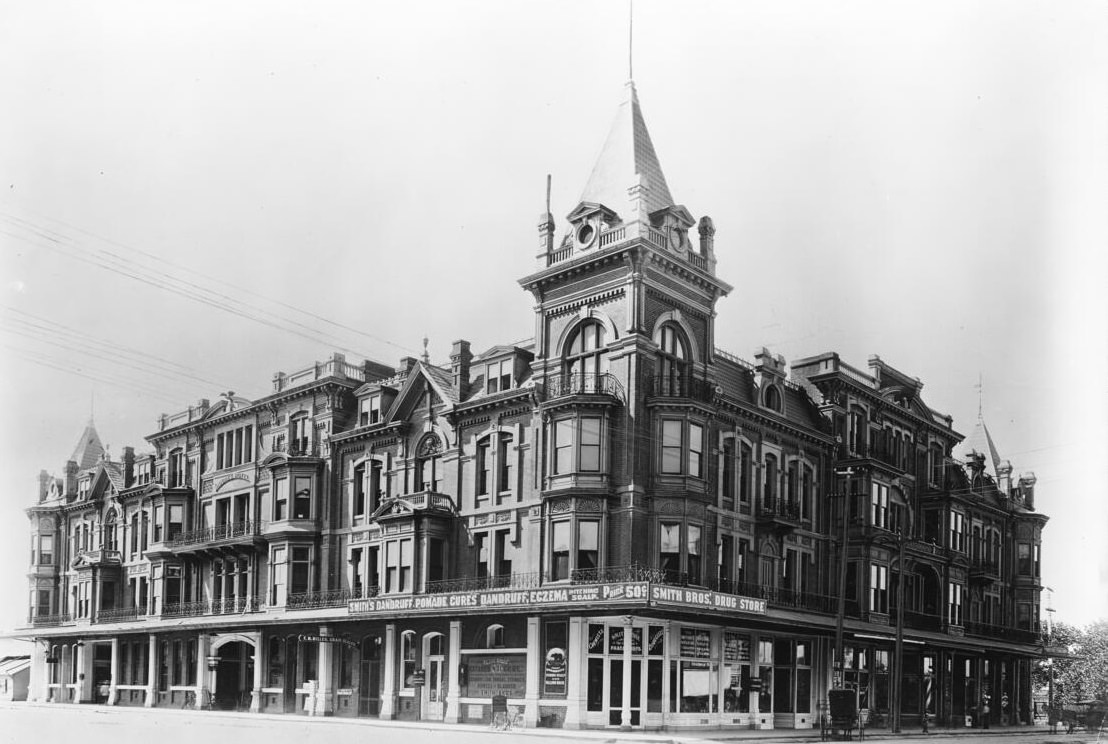
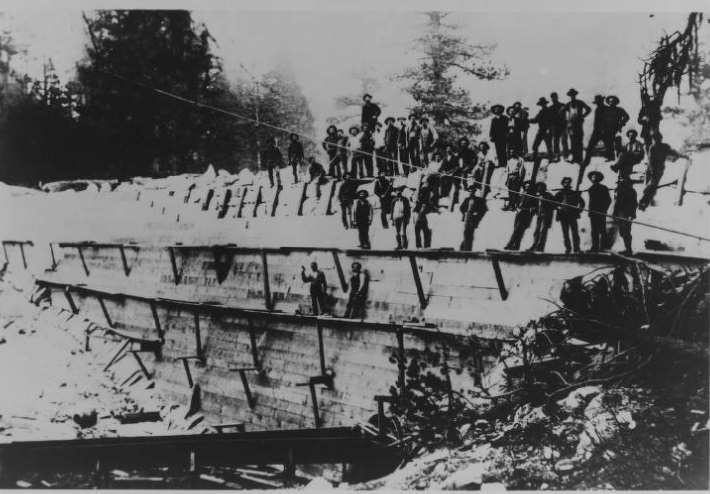
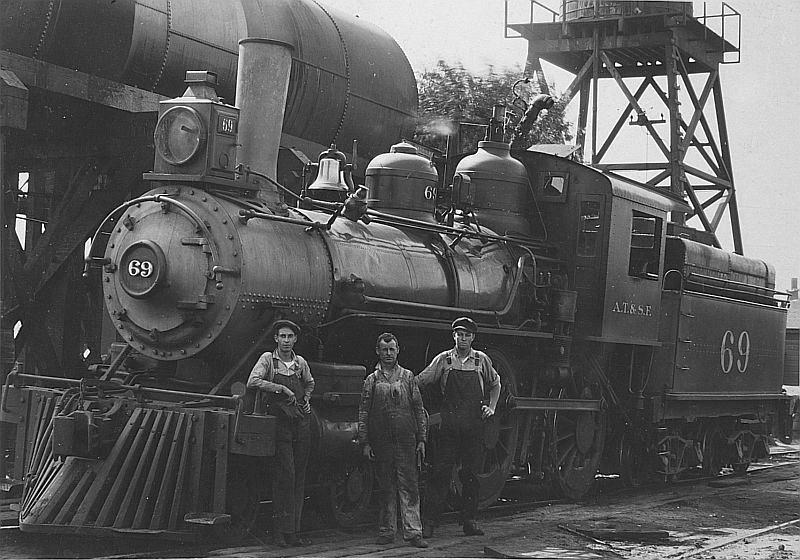
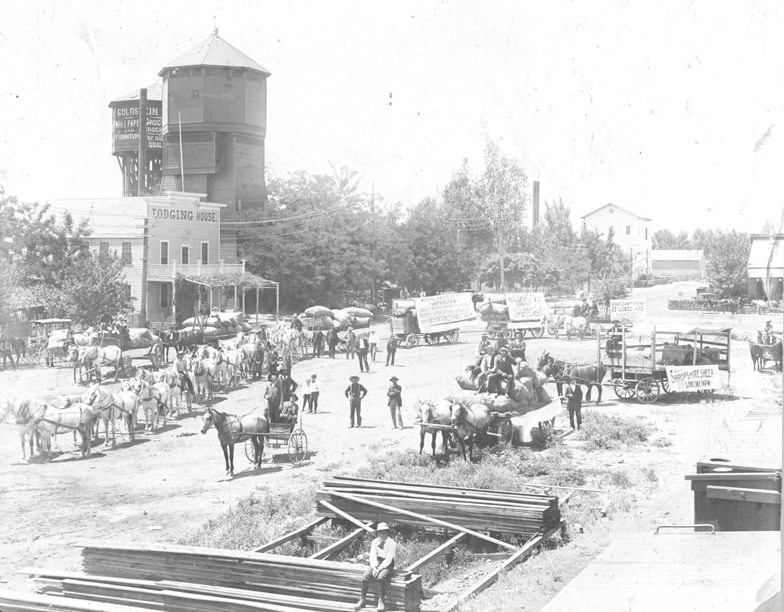
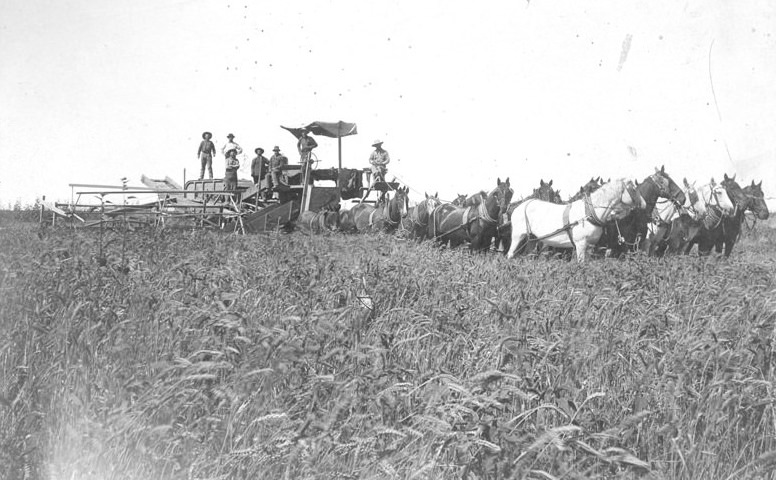
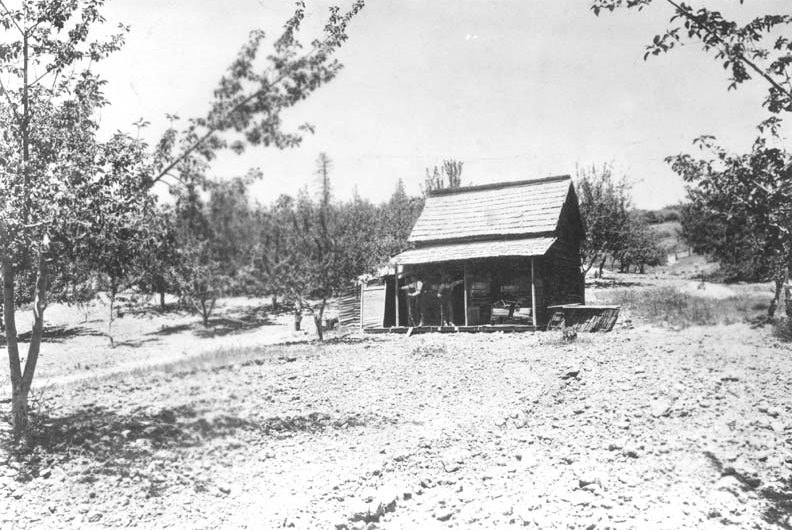
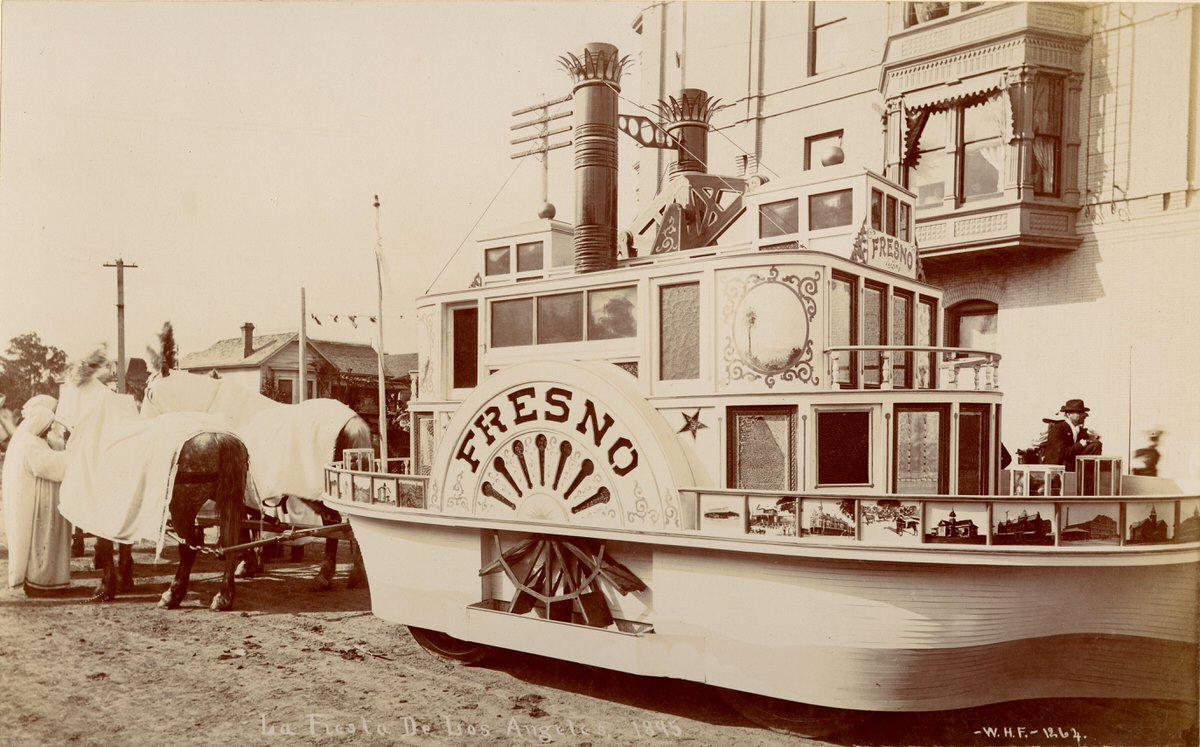
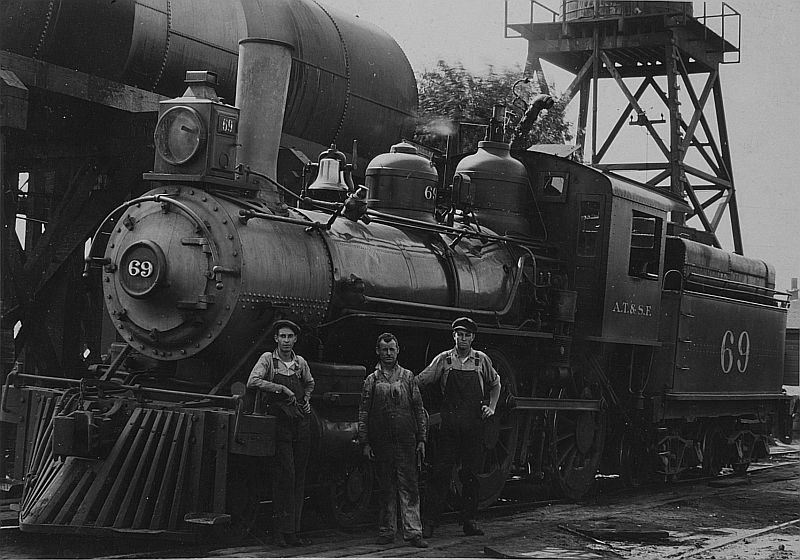
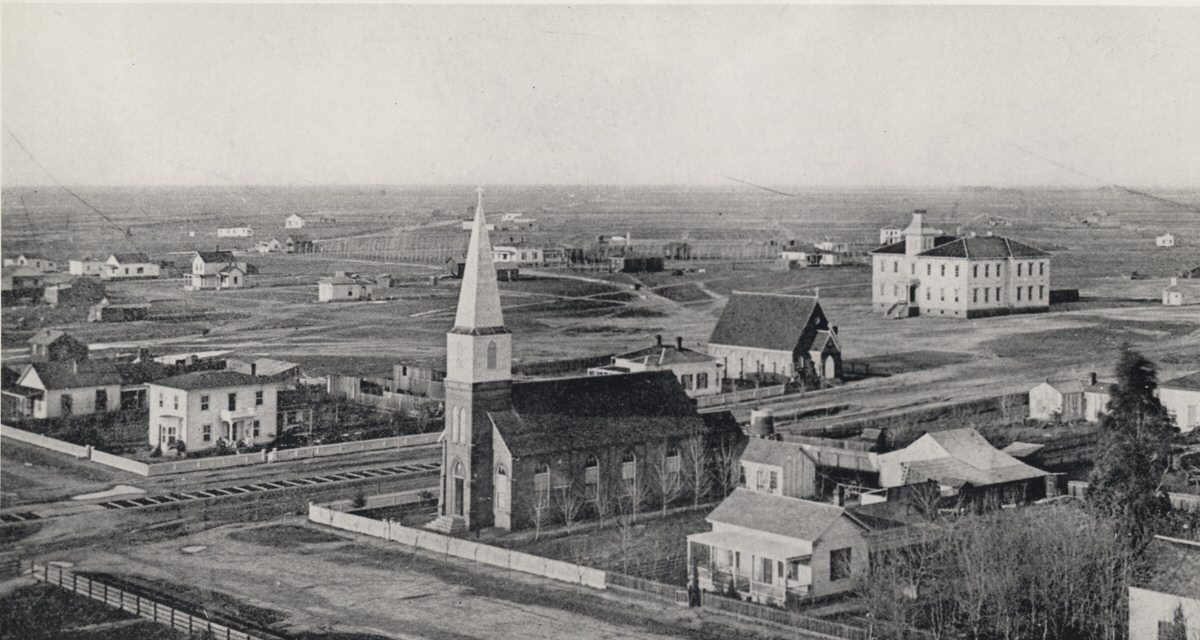
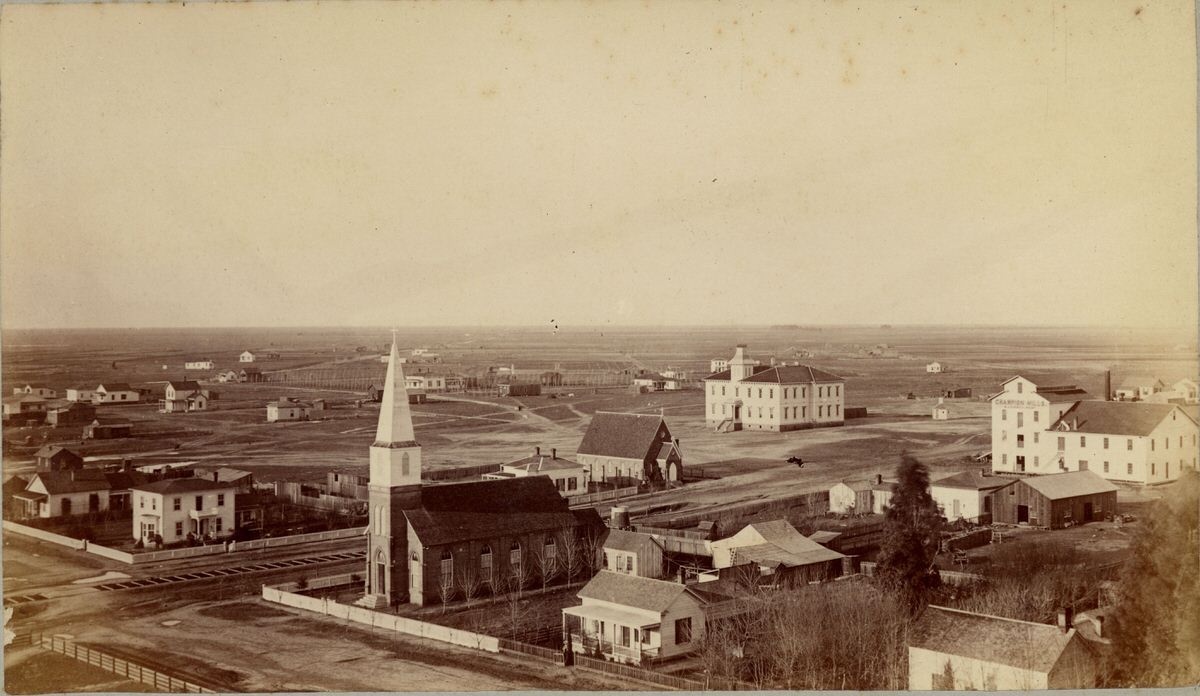
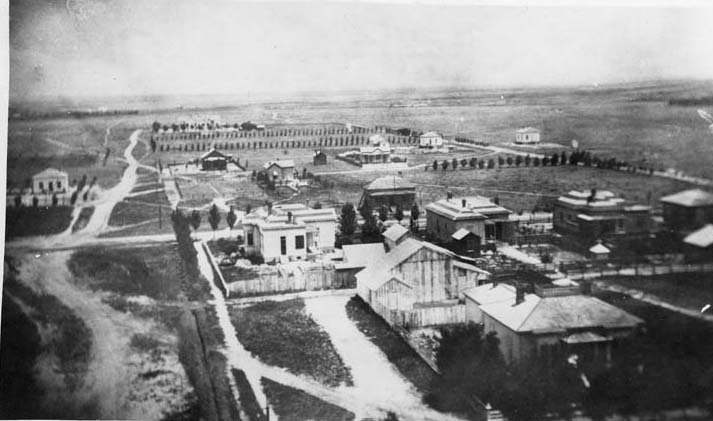
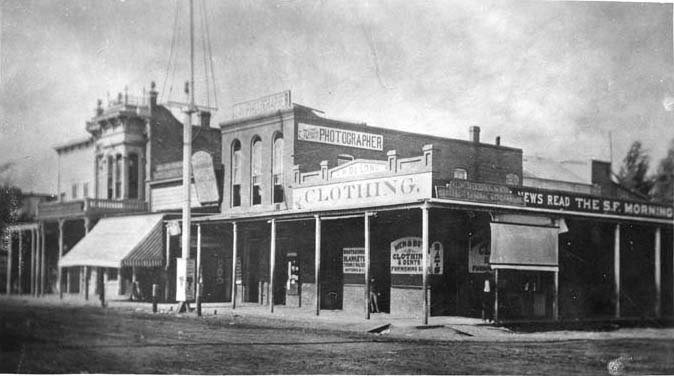
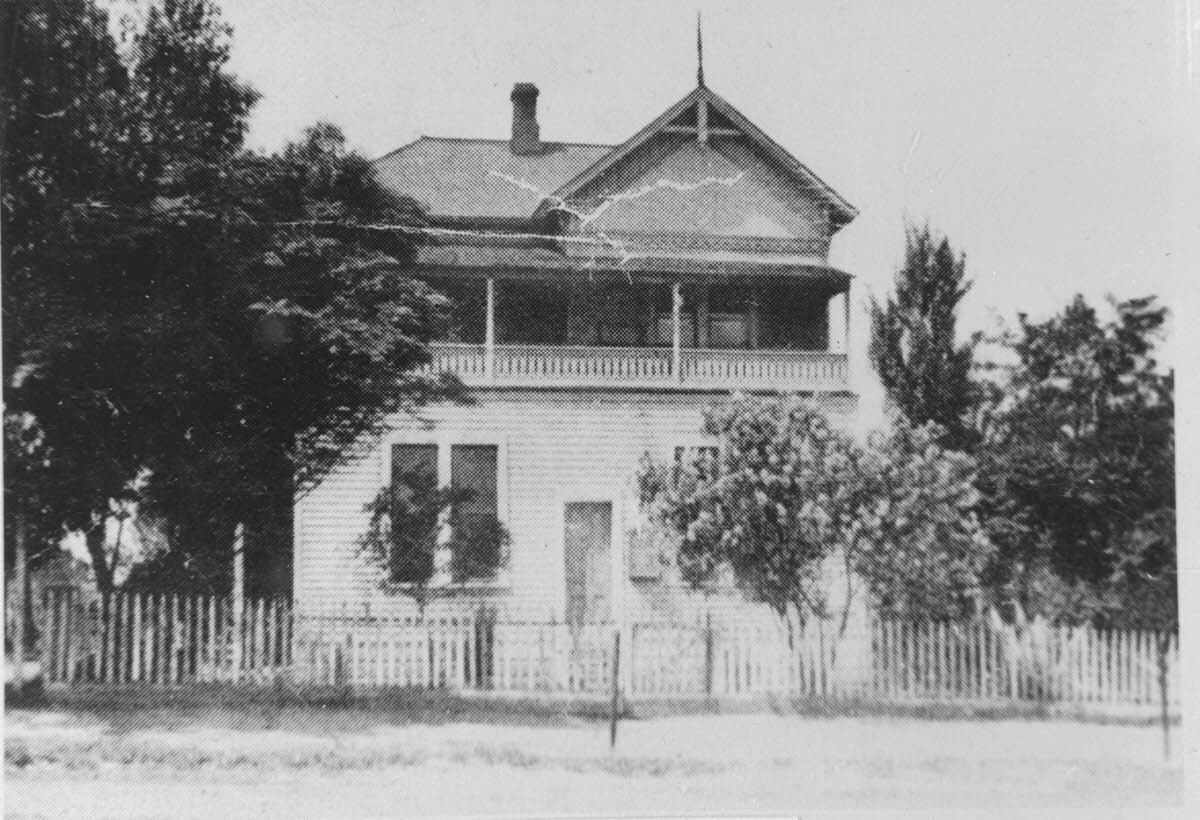
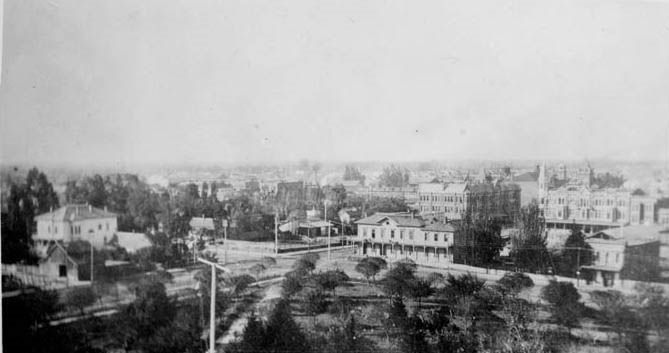
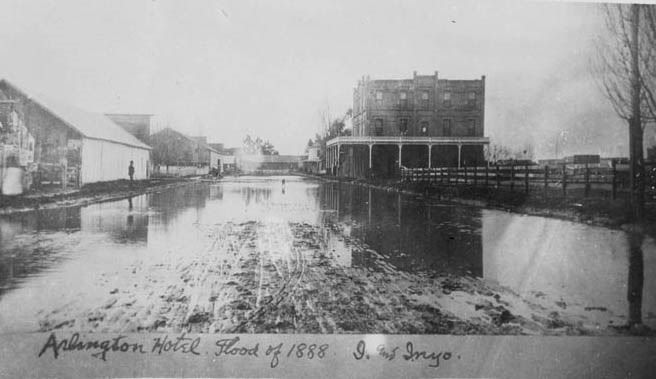
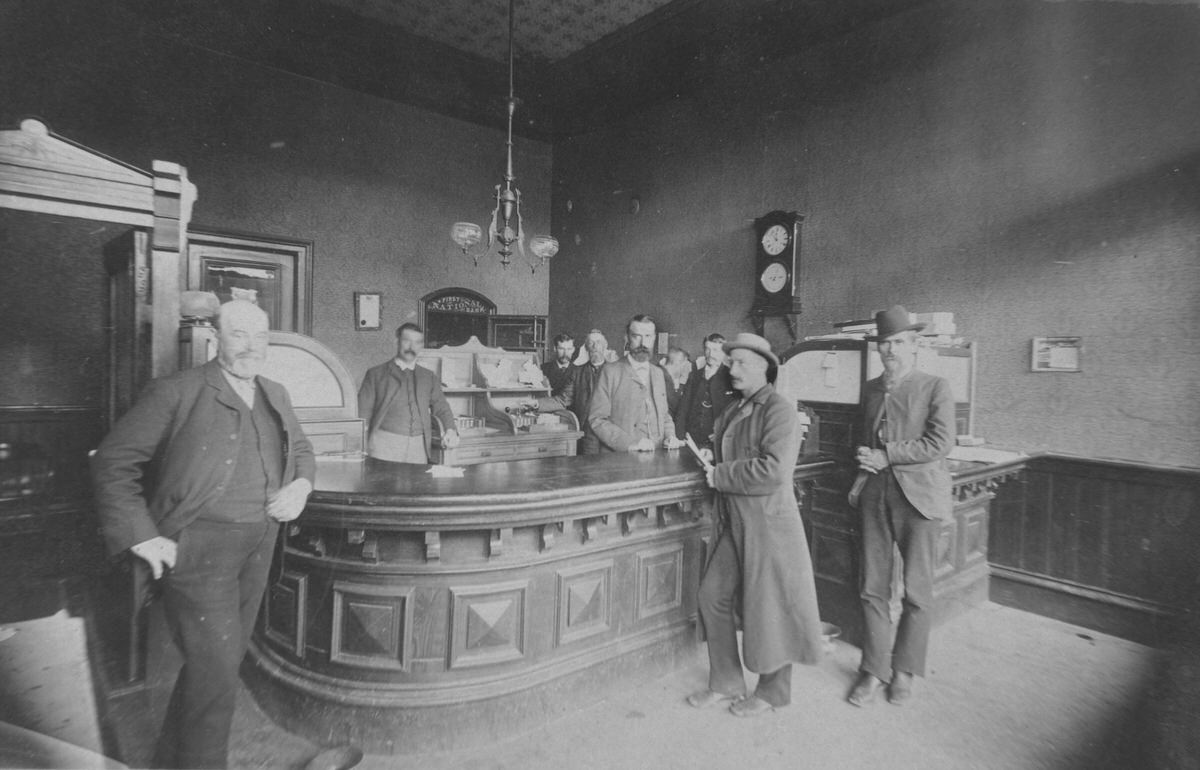
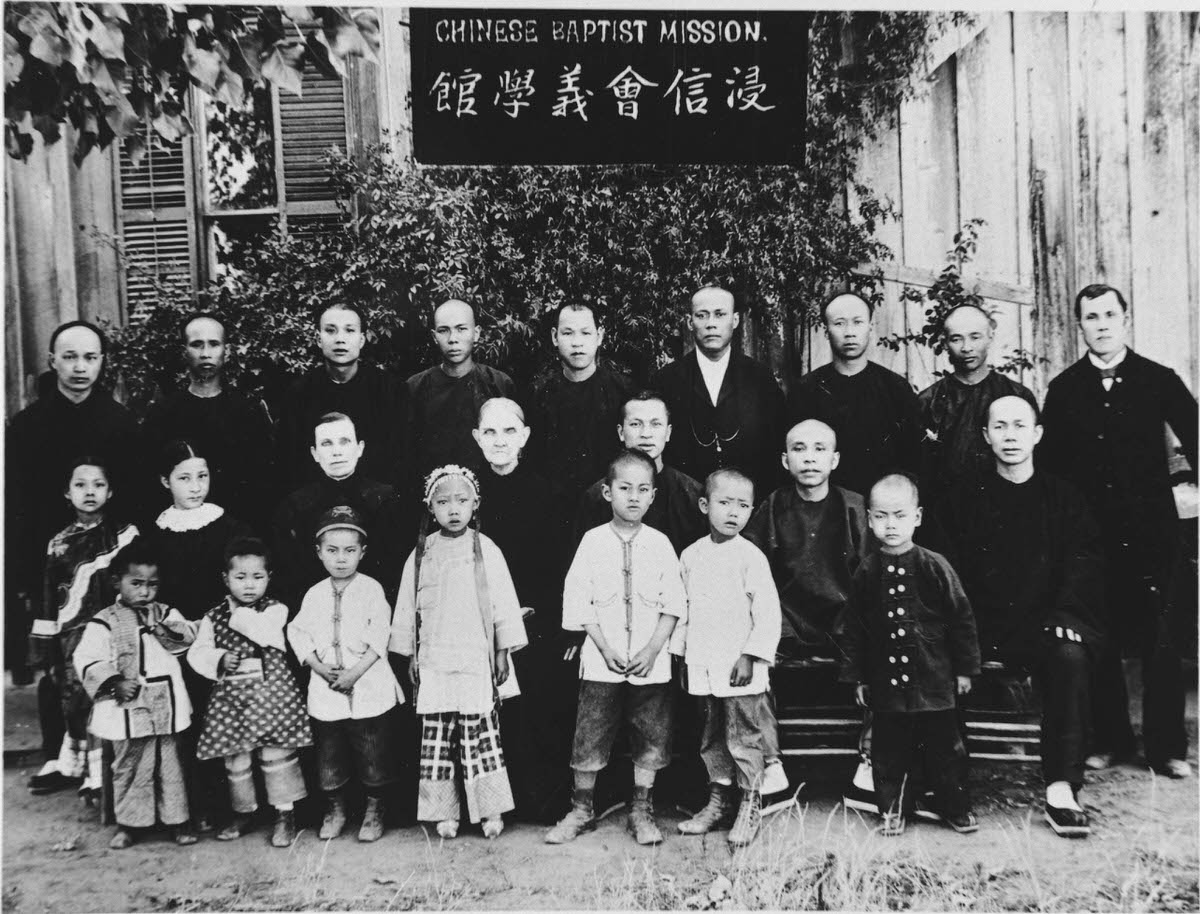
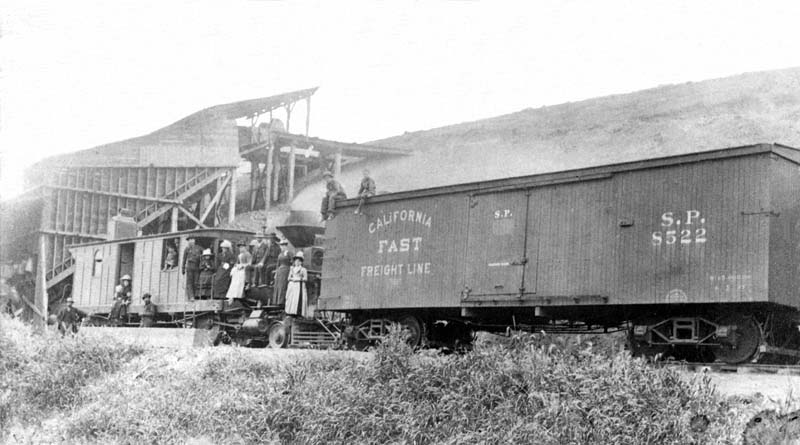
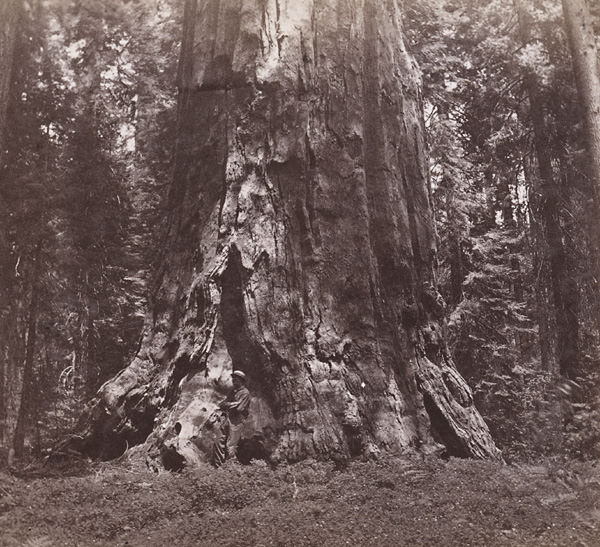
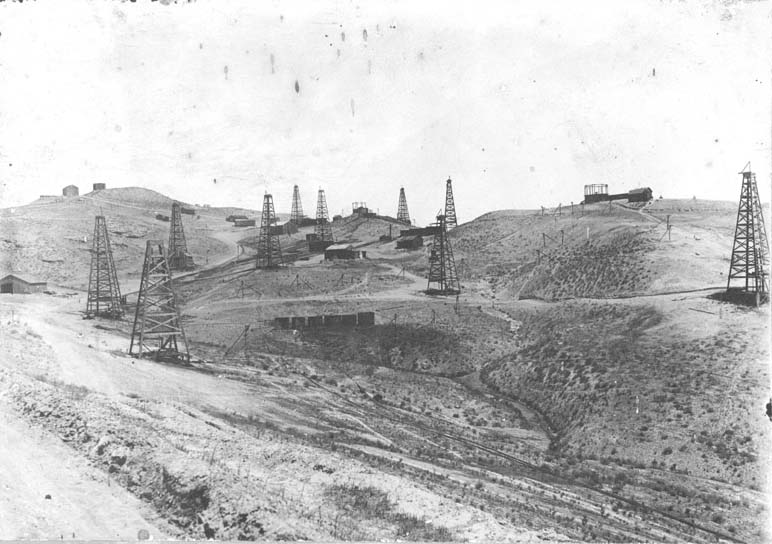
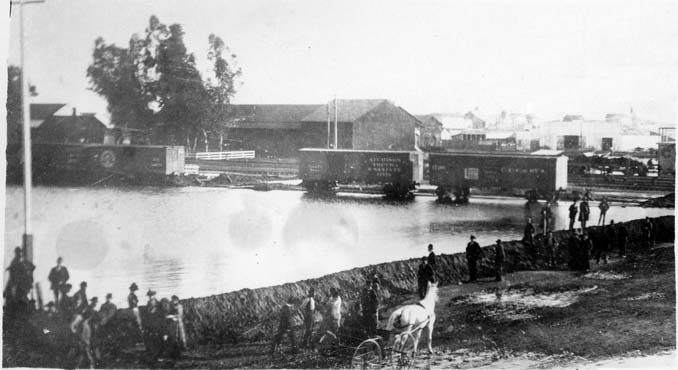

Fresno has a history of redlining Armenians. At one point Armenians who wanted to own property would whitewash their names.
KPFA Fresno on 88.1 FM did a great interview last summer and they some scholar on to talk about it. I like to think of your 8 downvotes as 8 people who can’t accept even our beautiful lovely perfect city had/has its flaws.
The other possibility is they have no sense of humor.